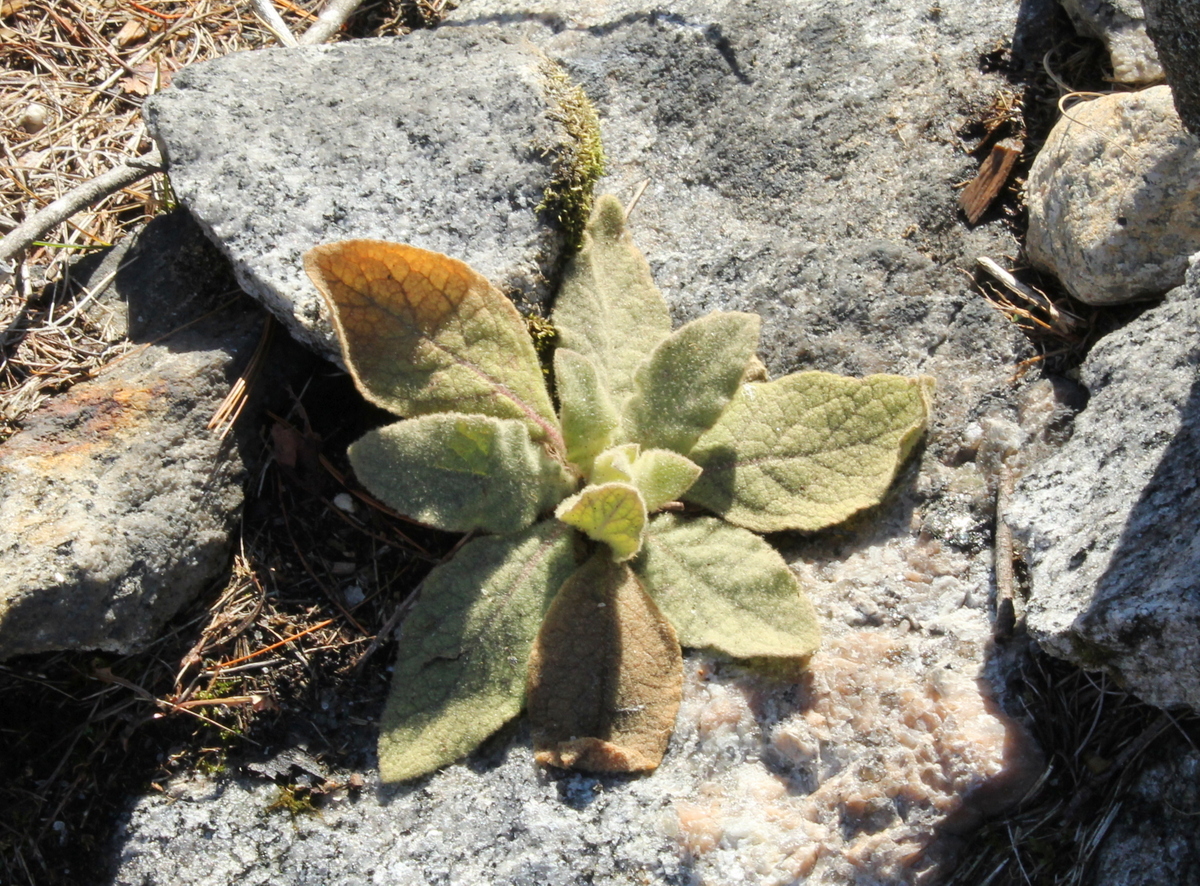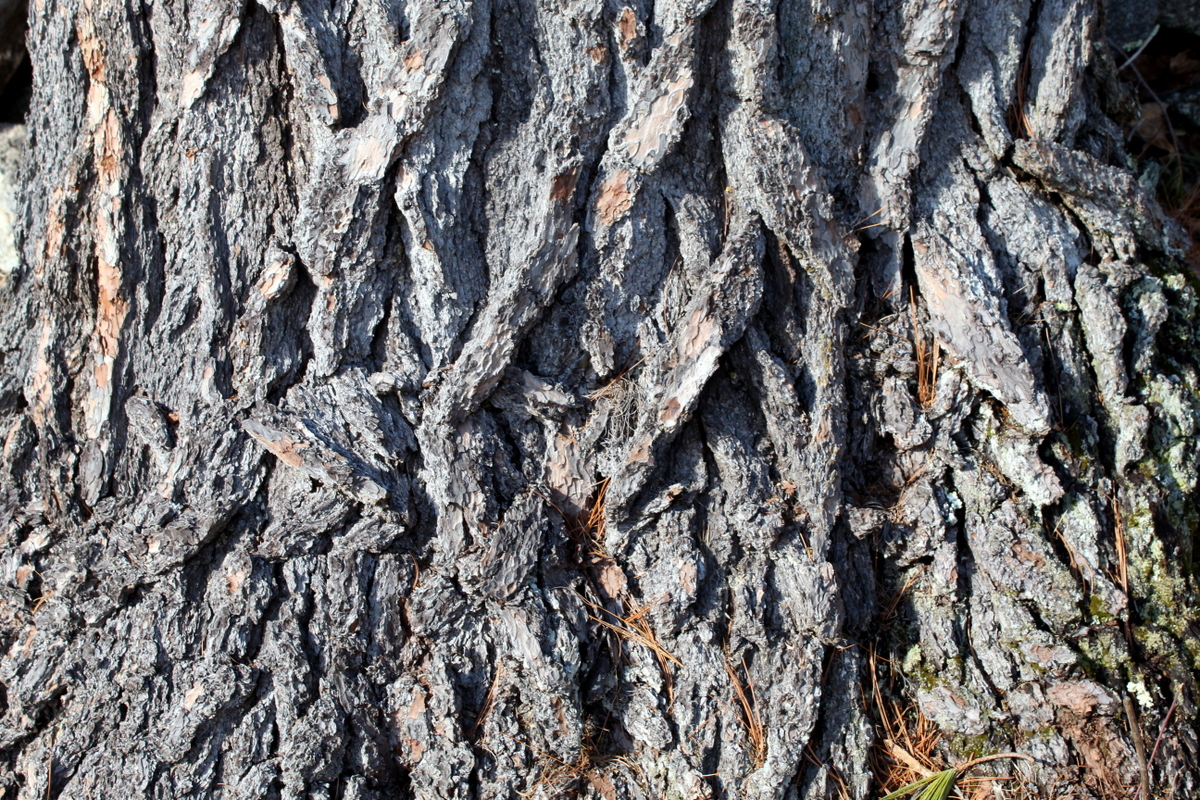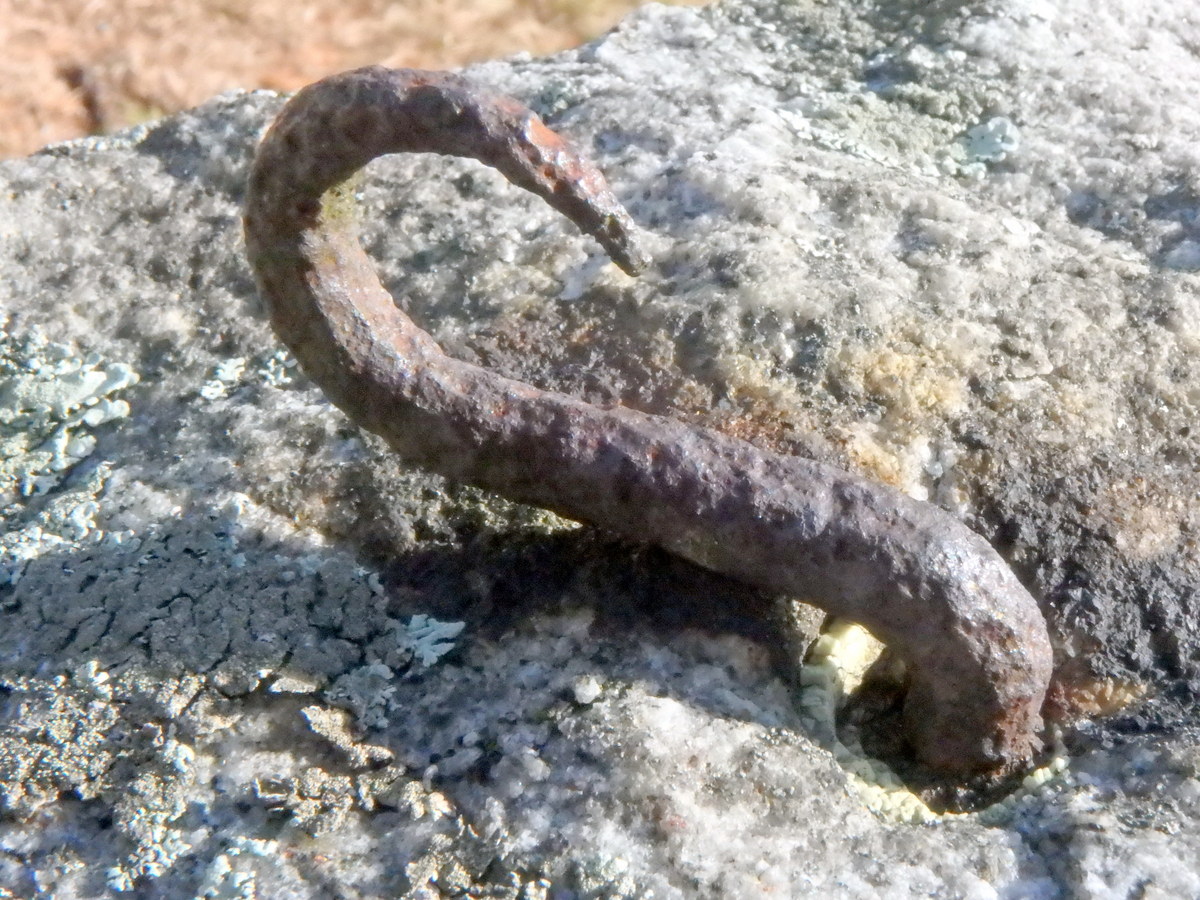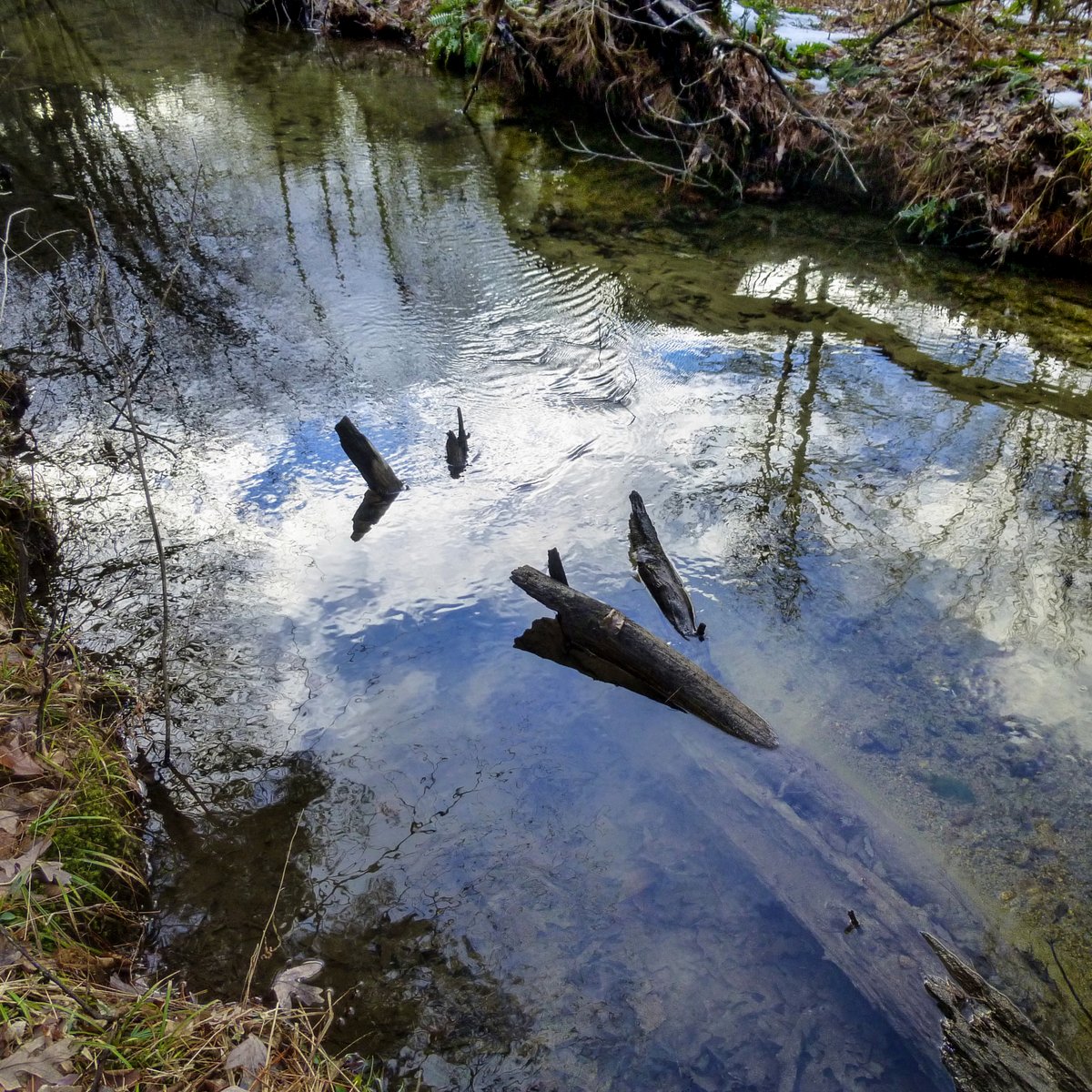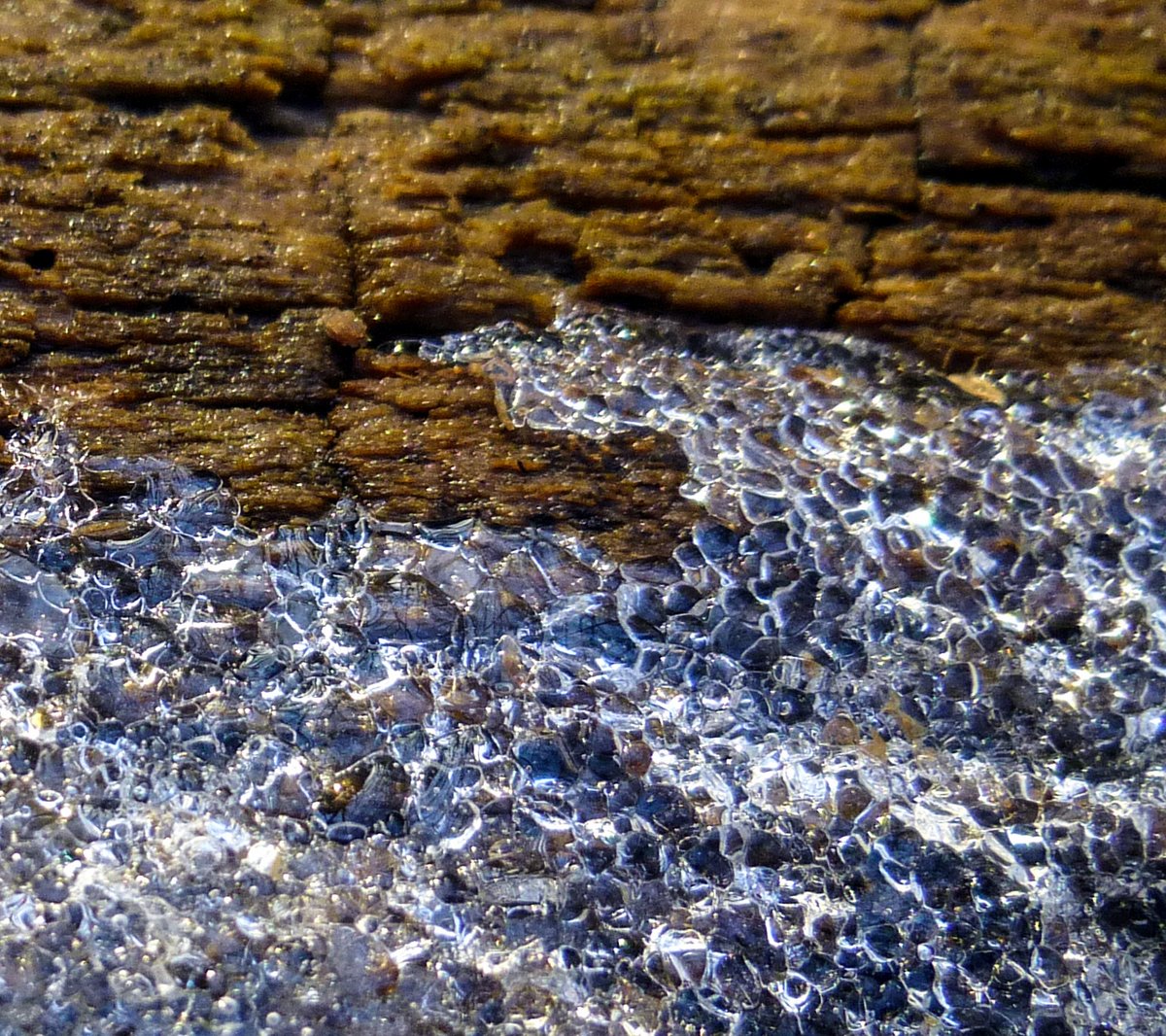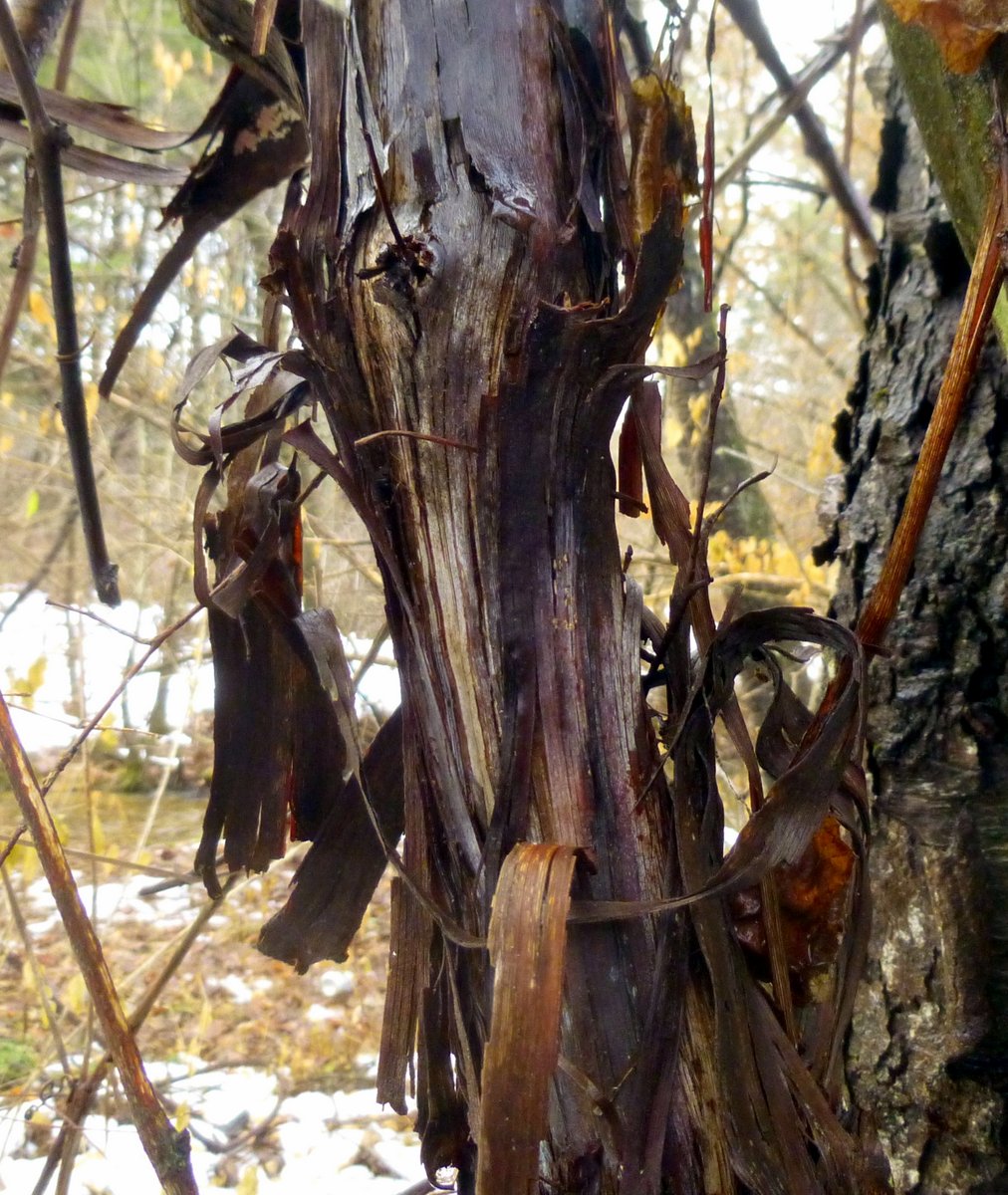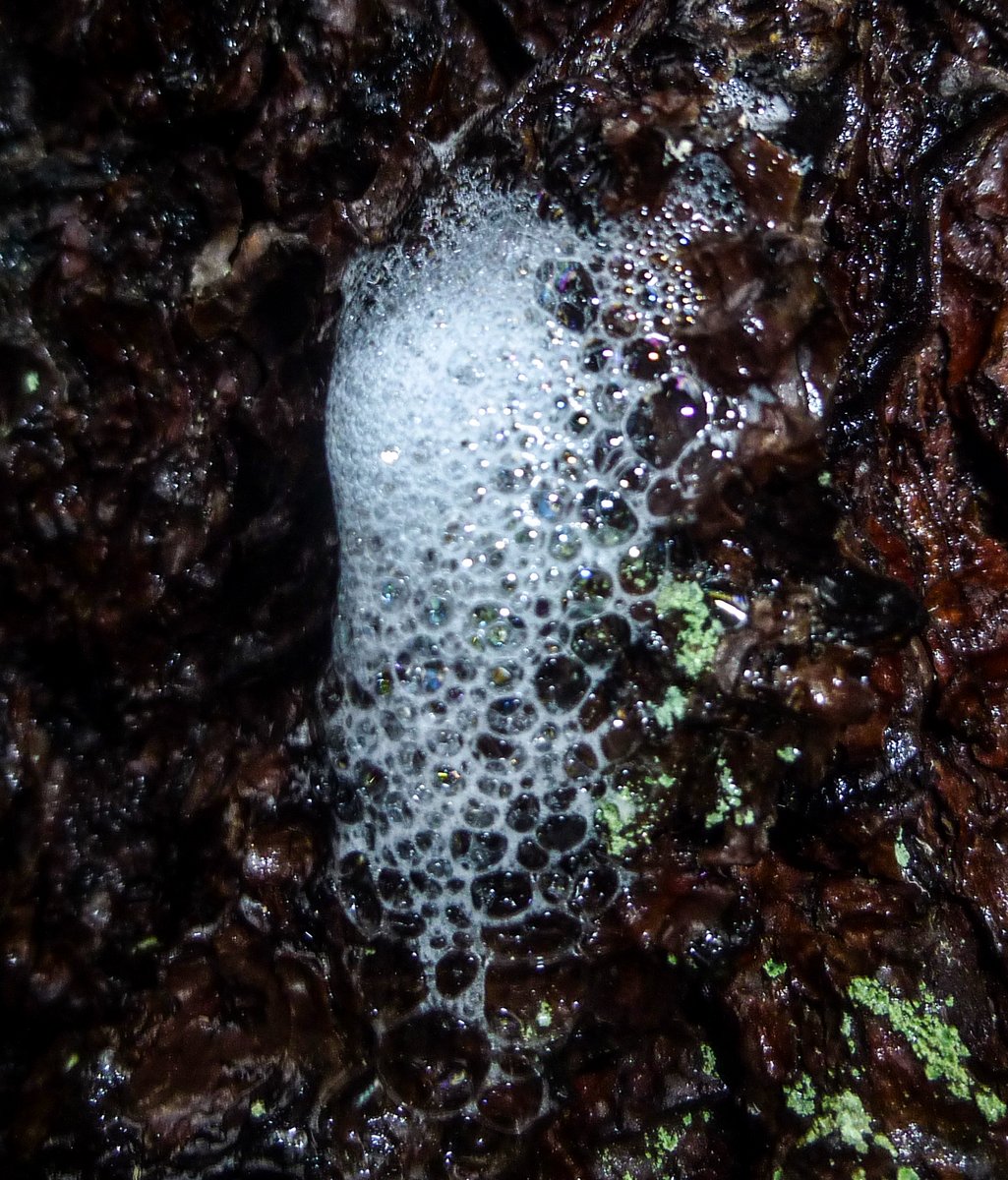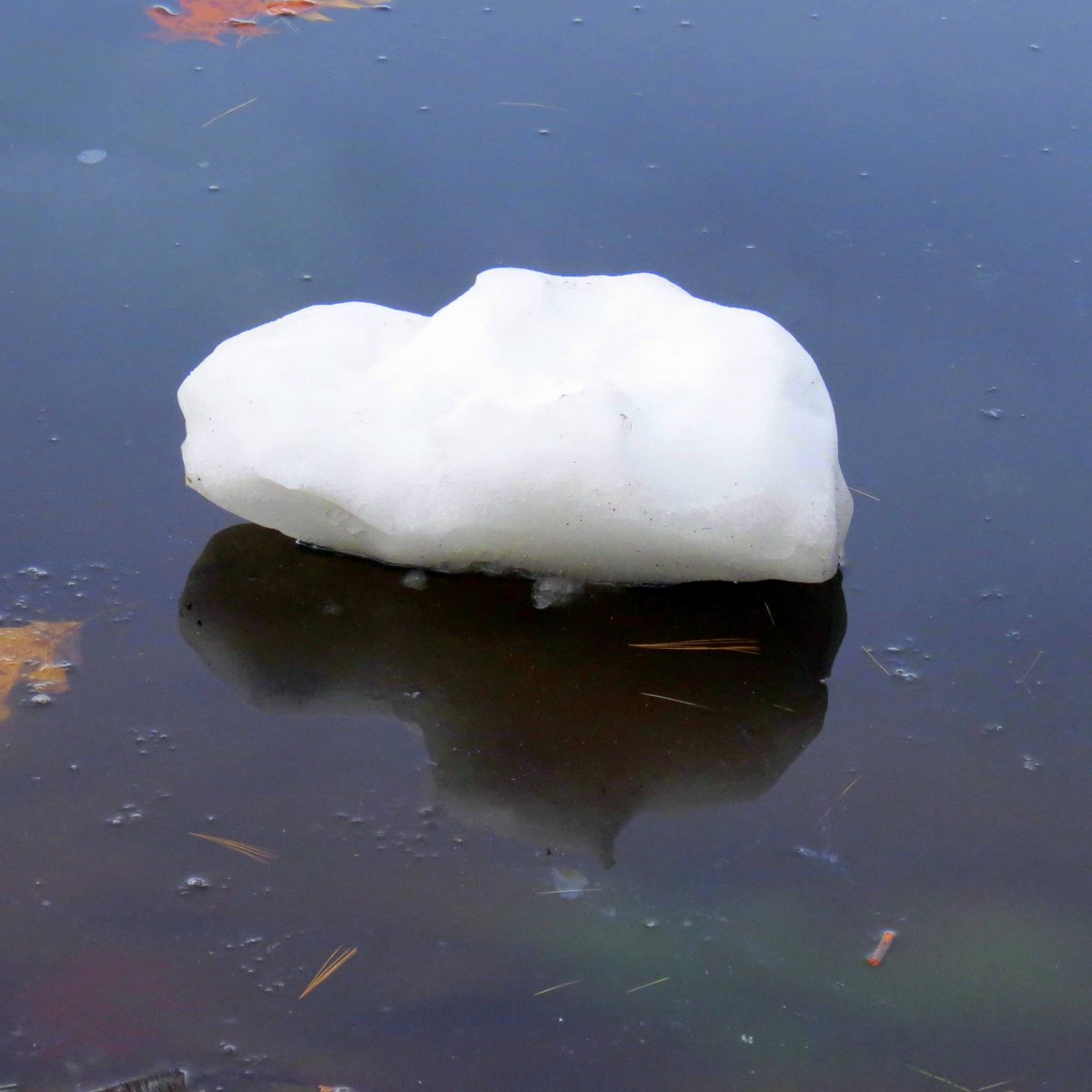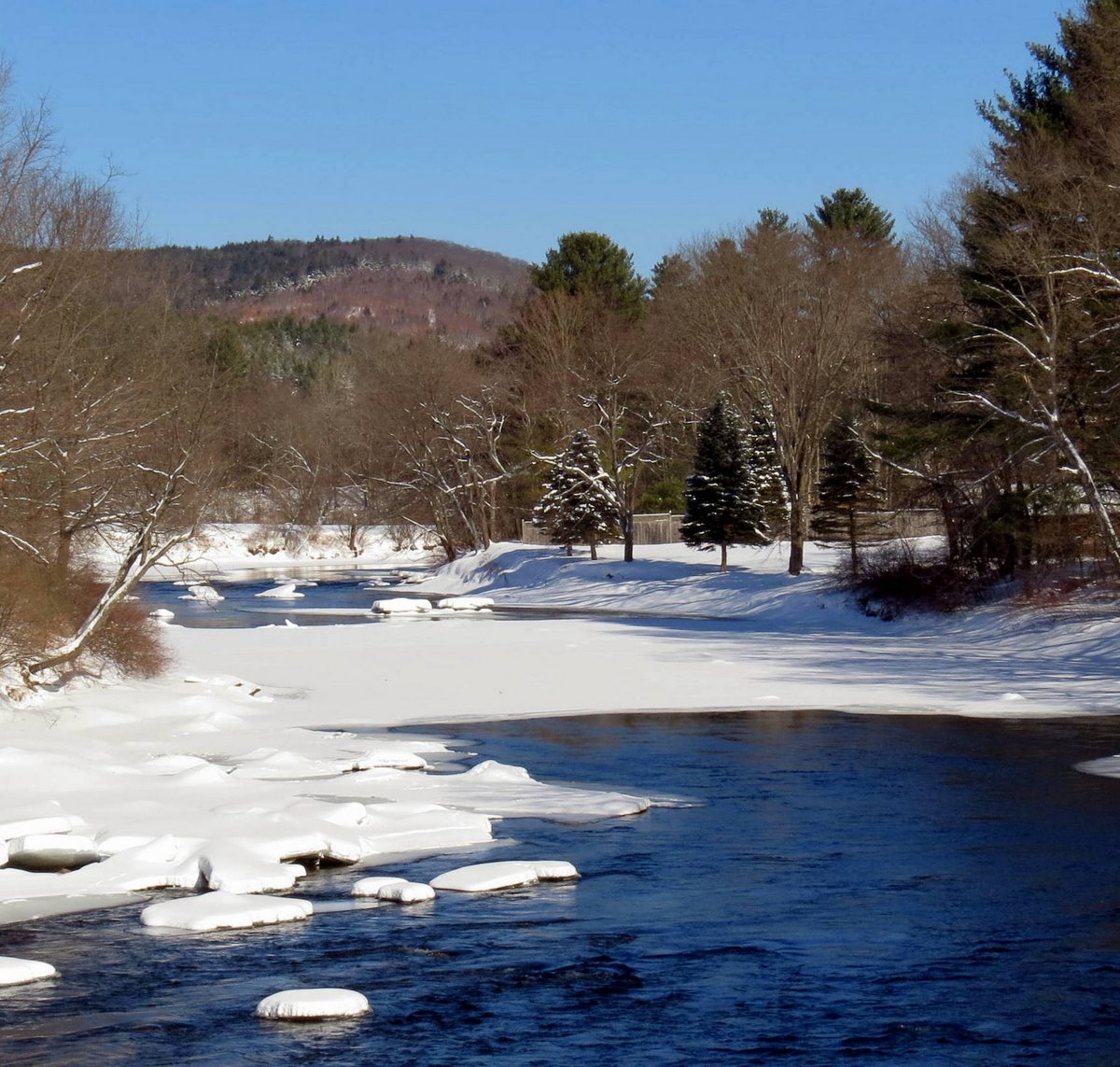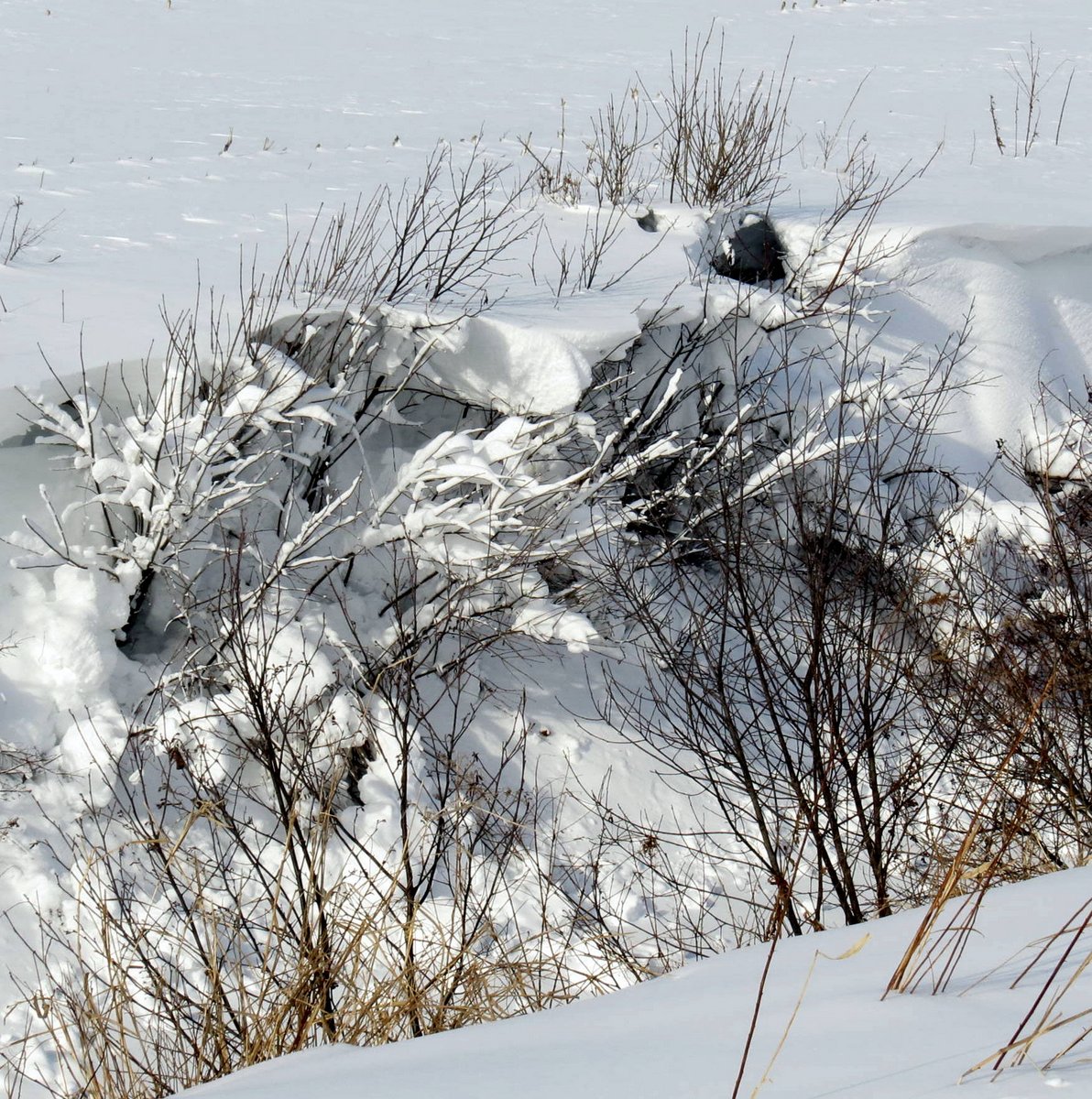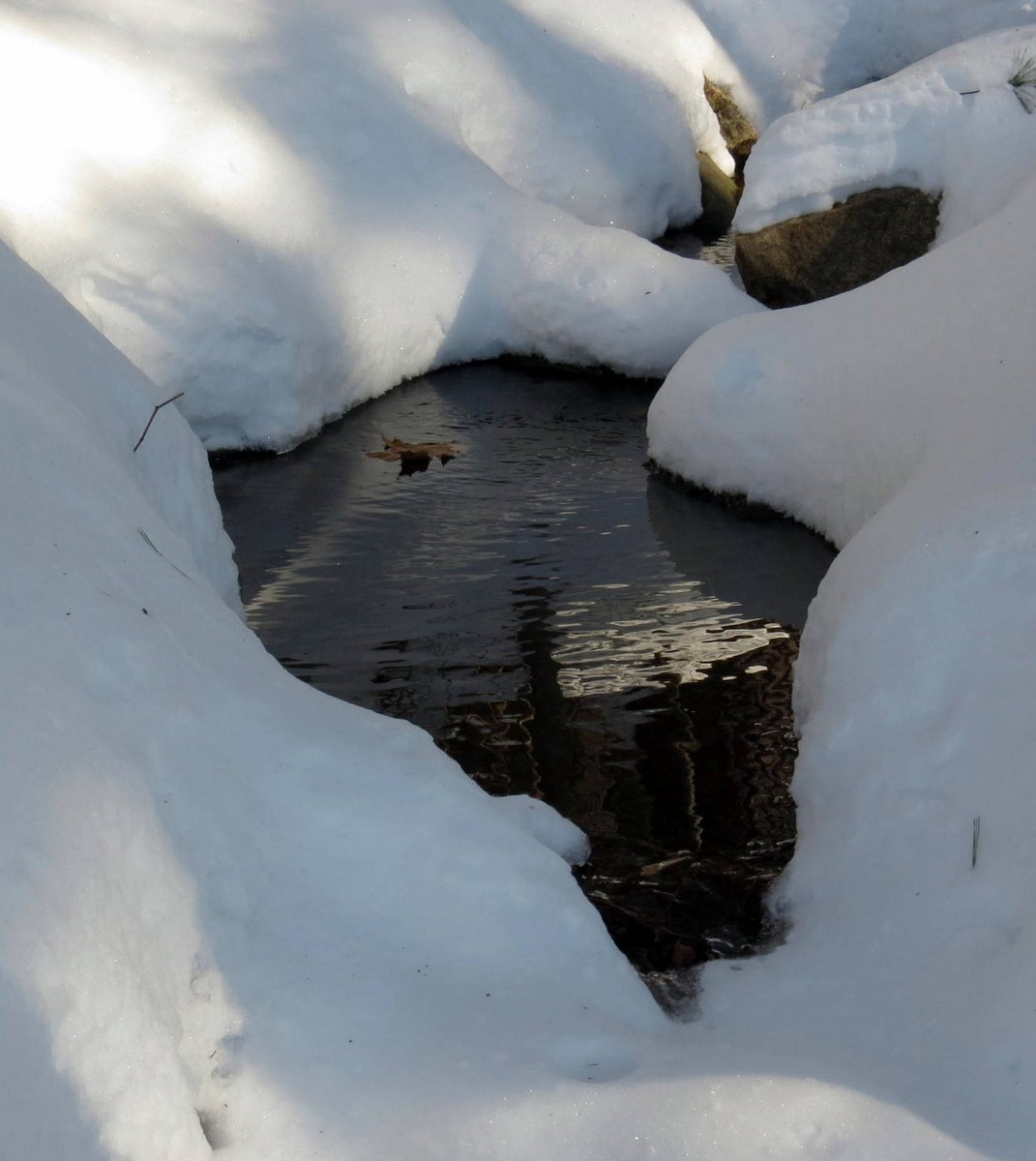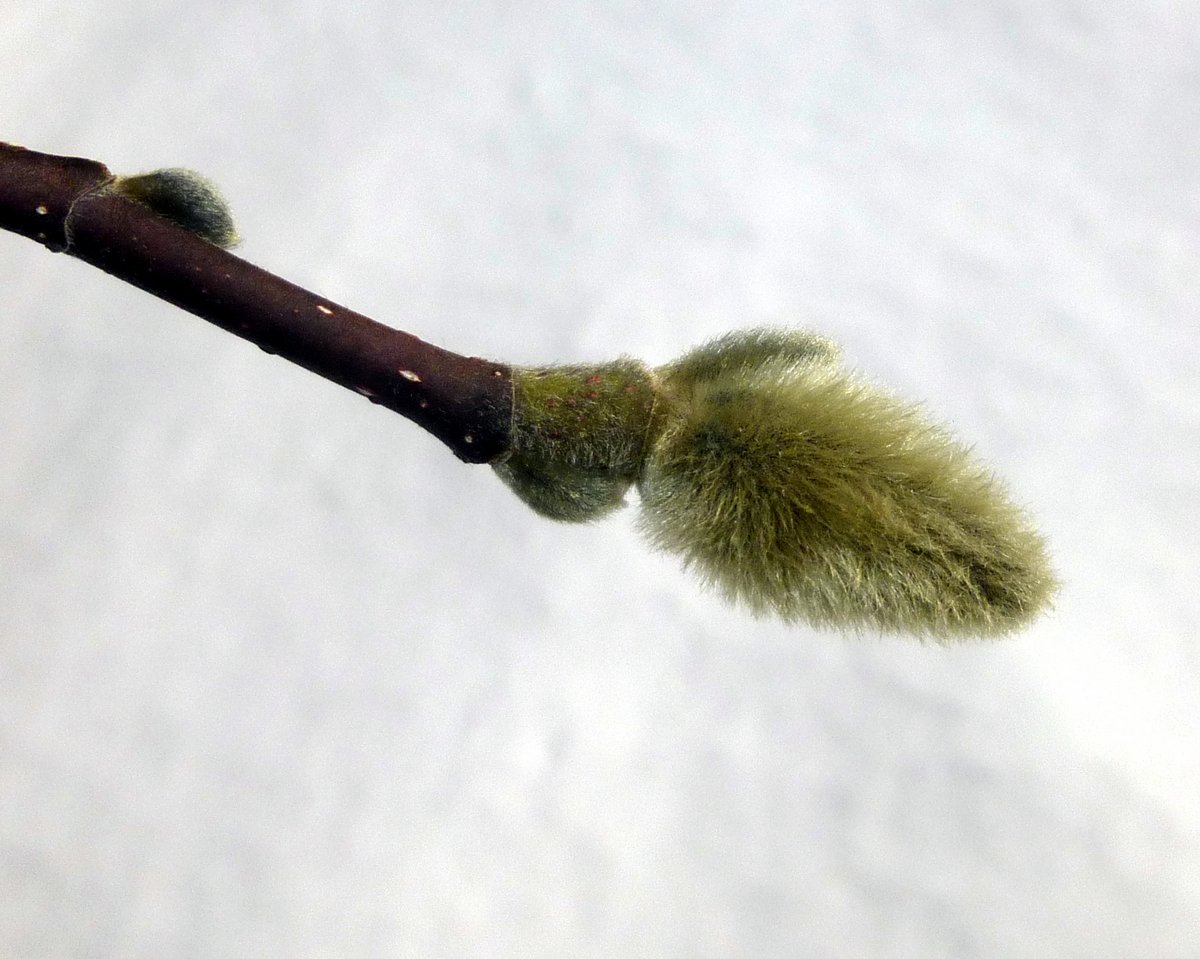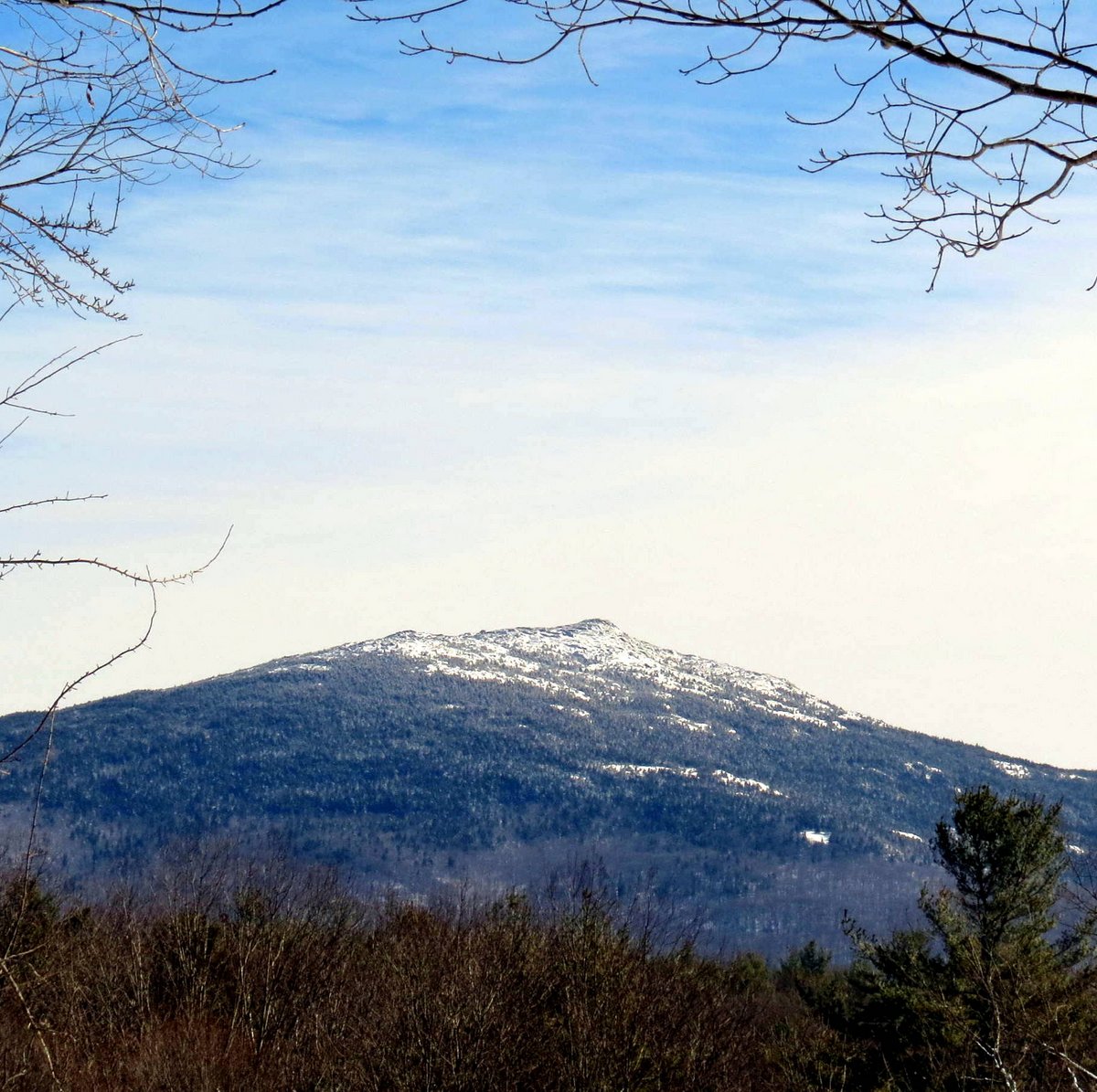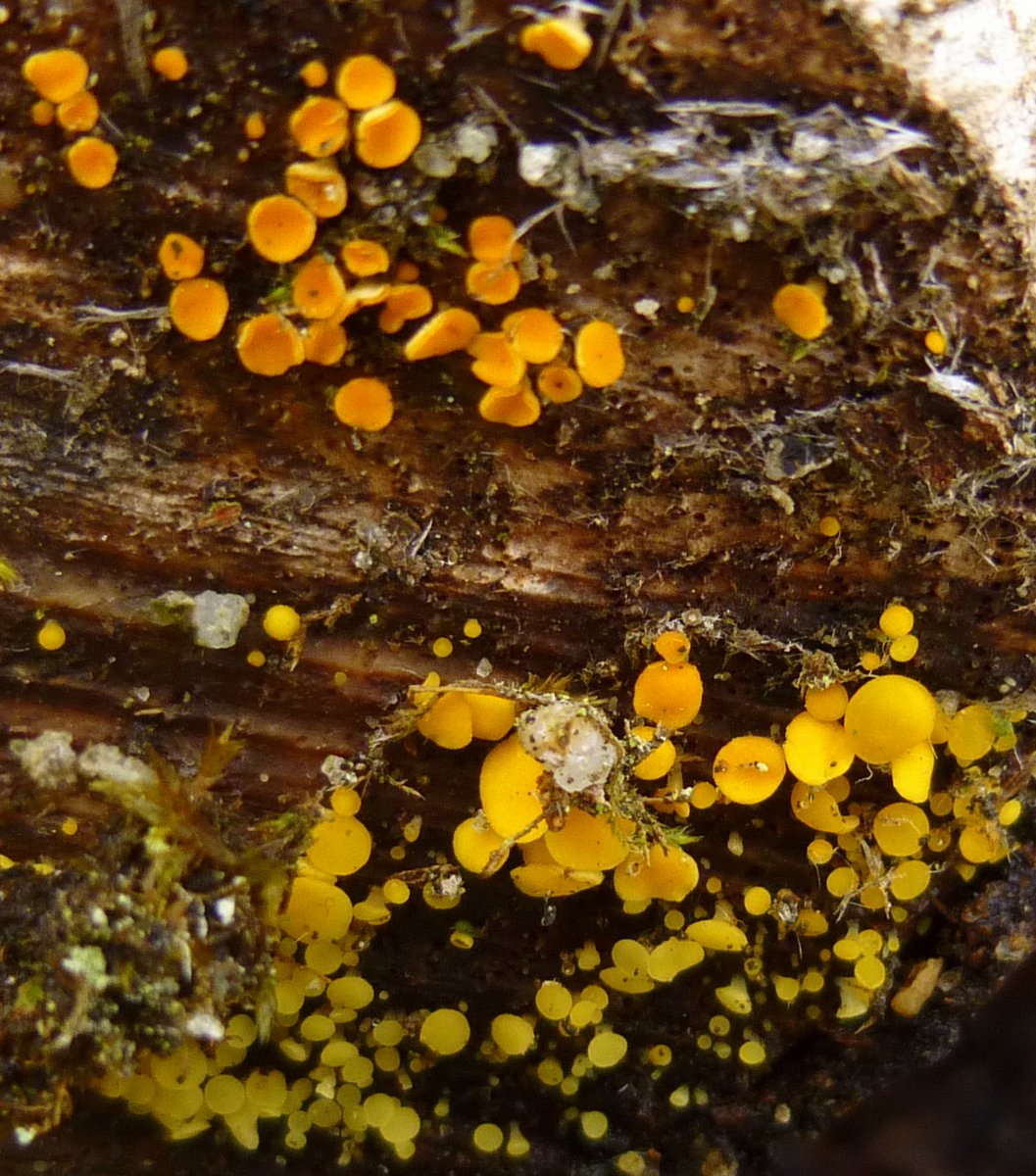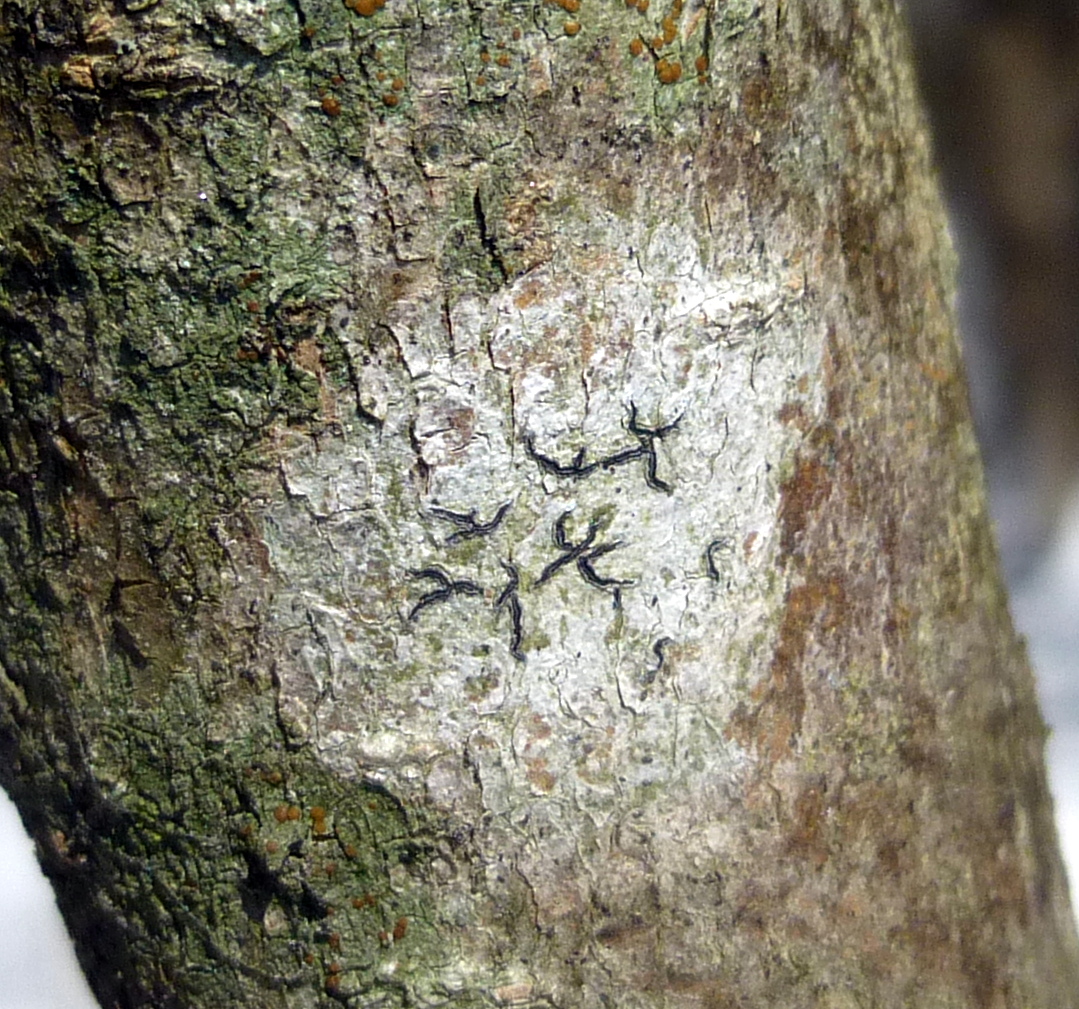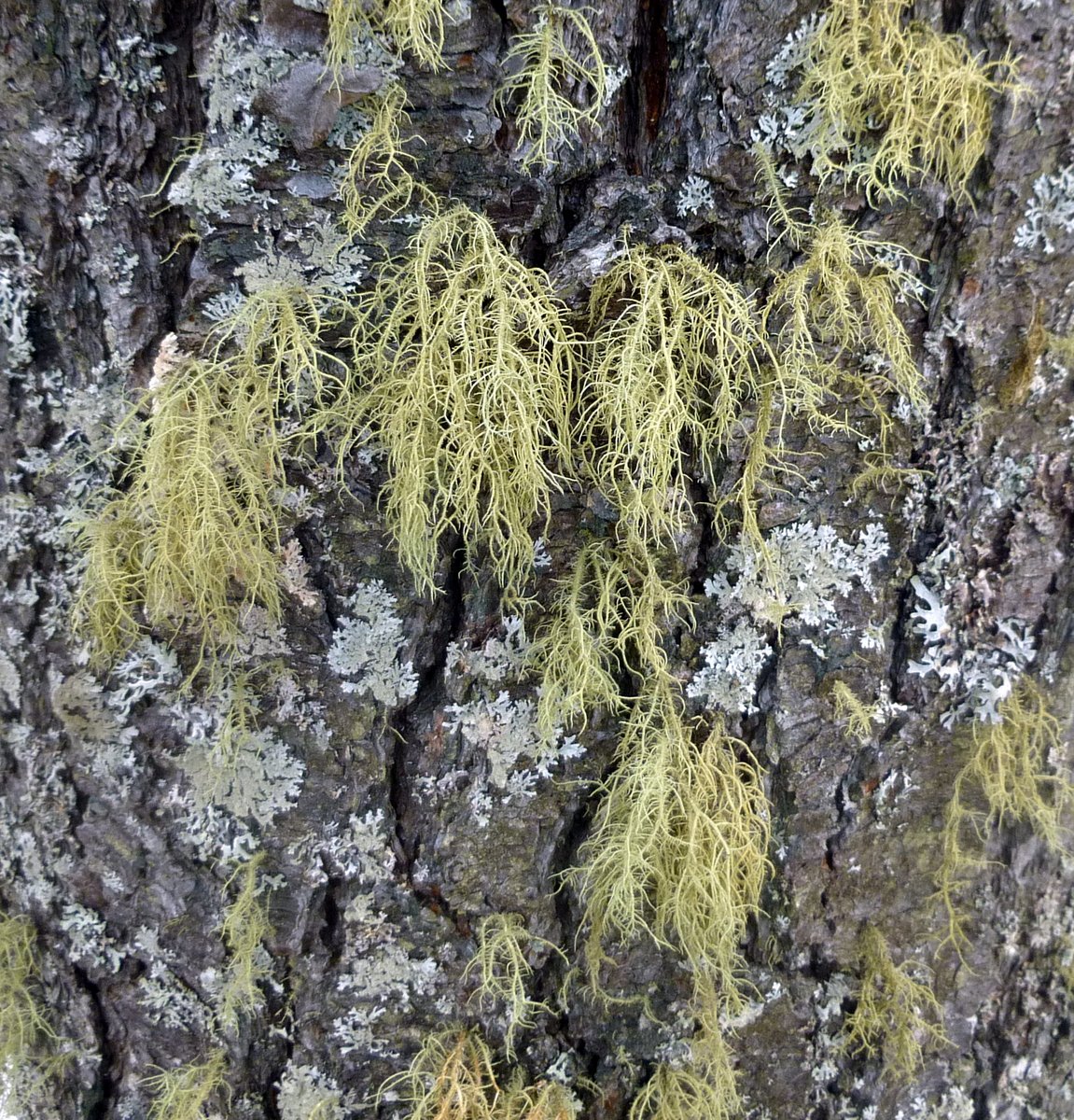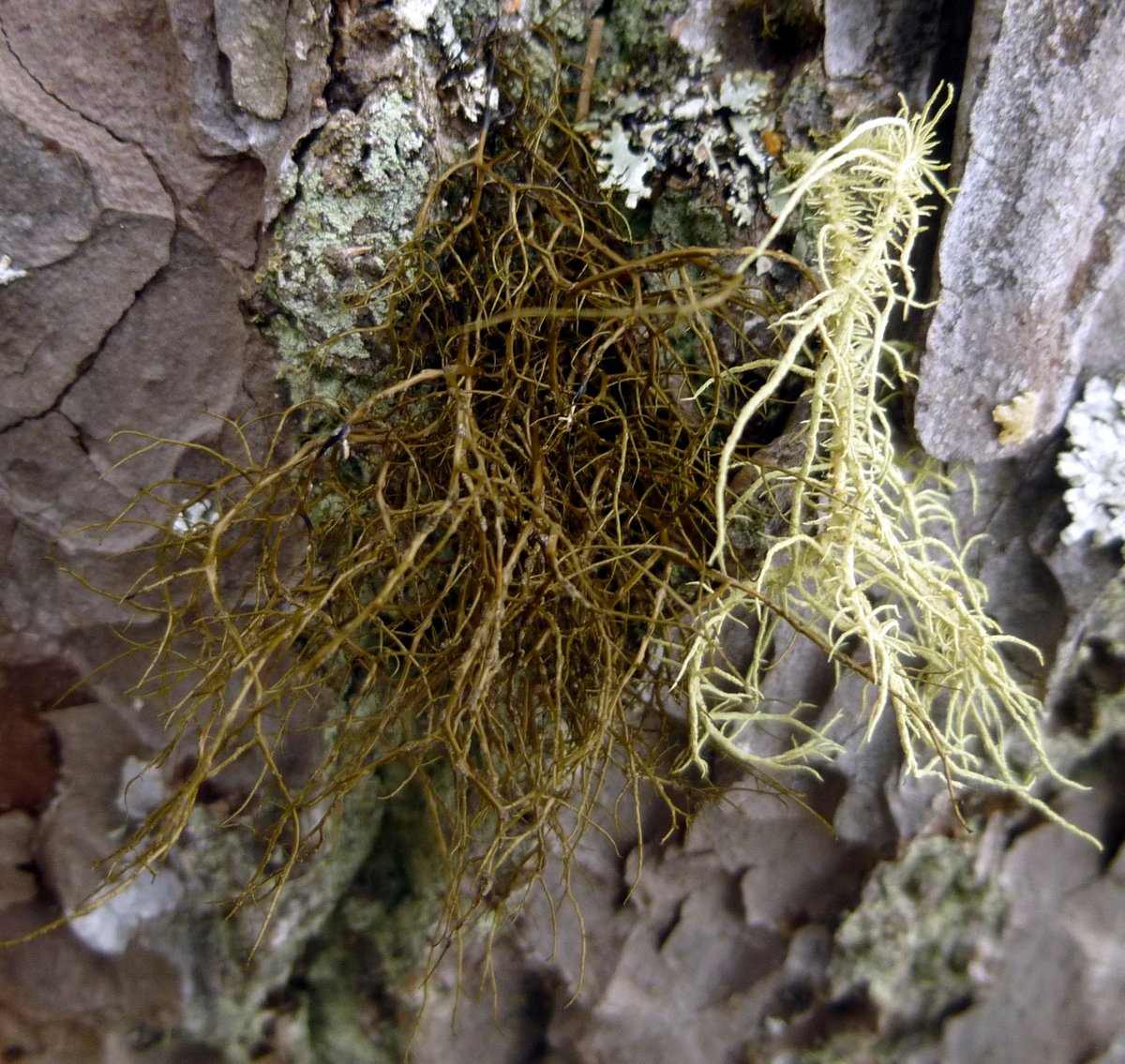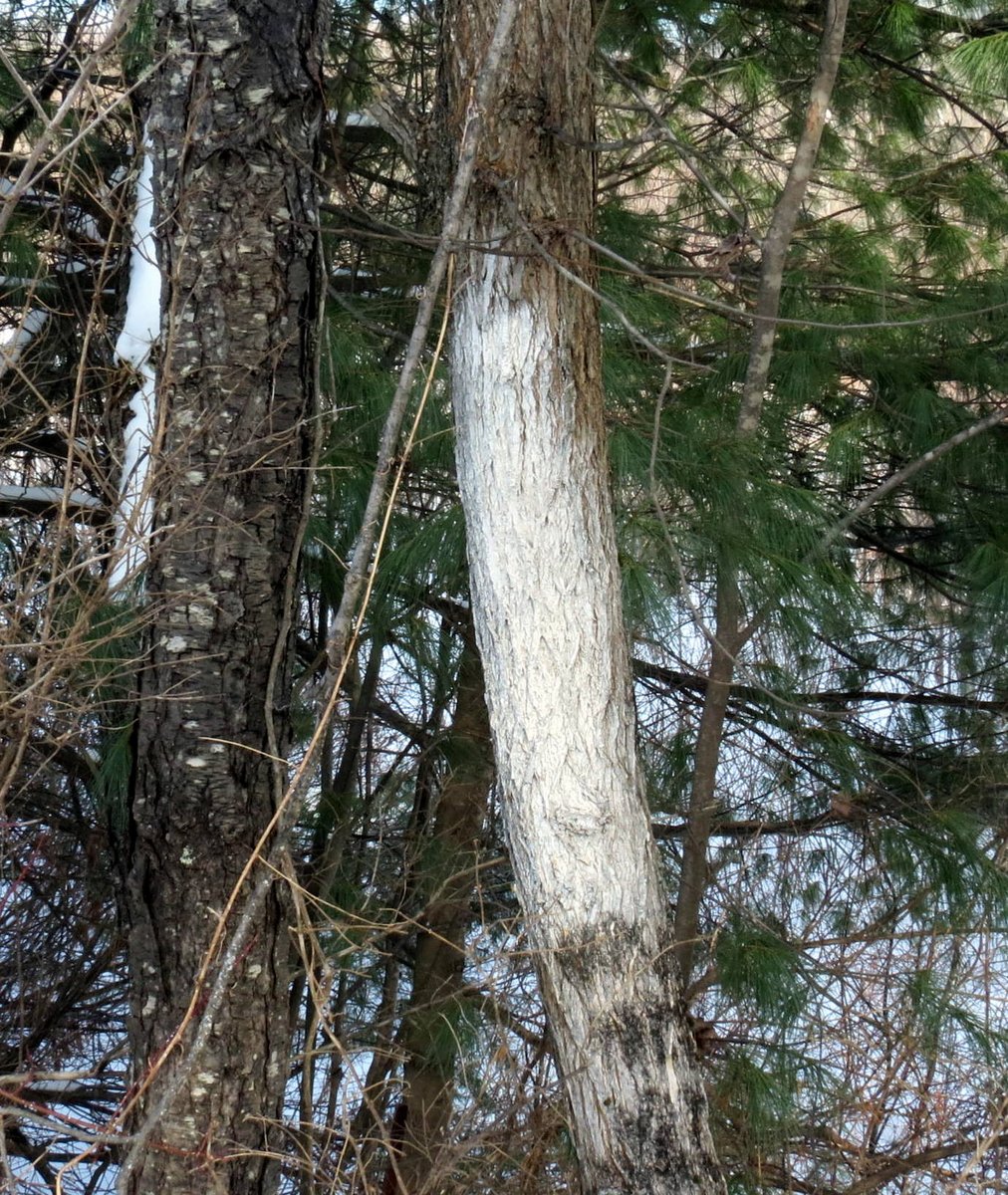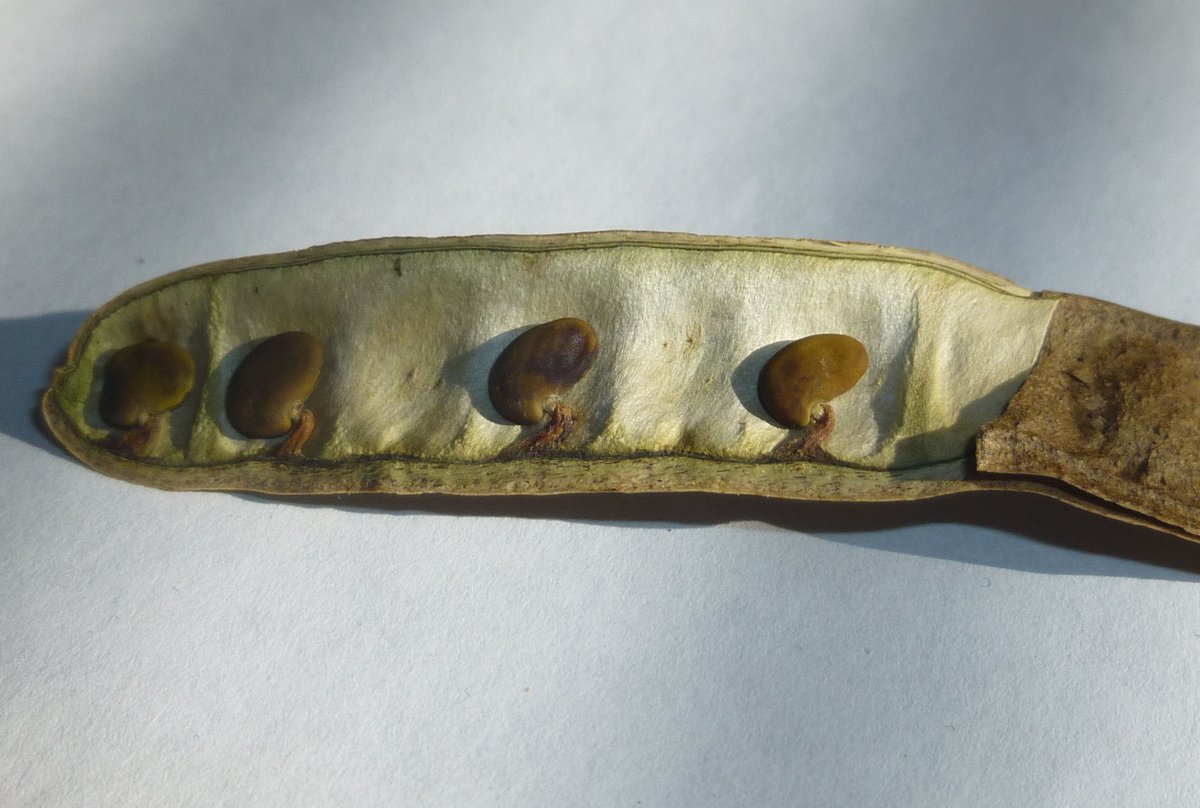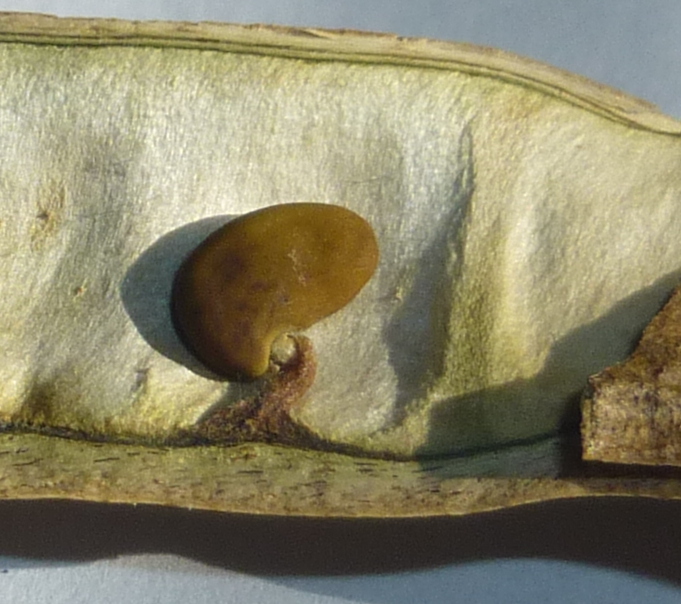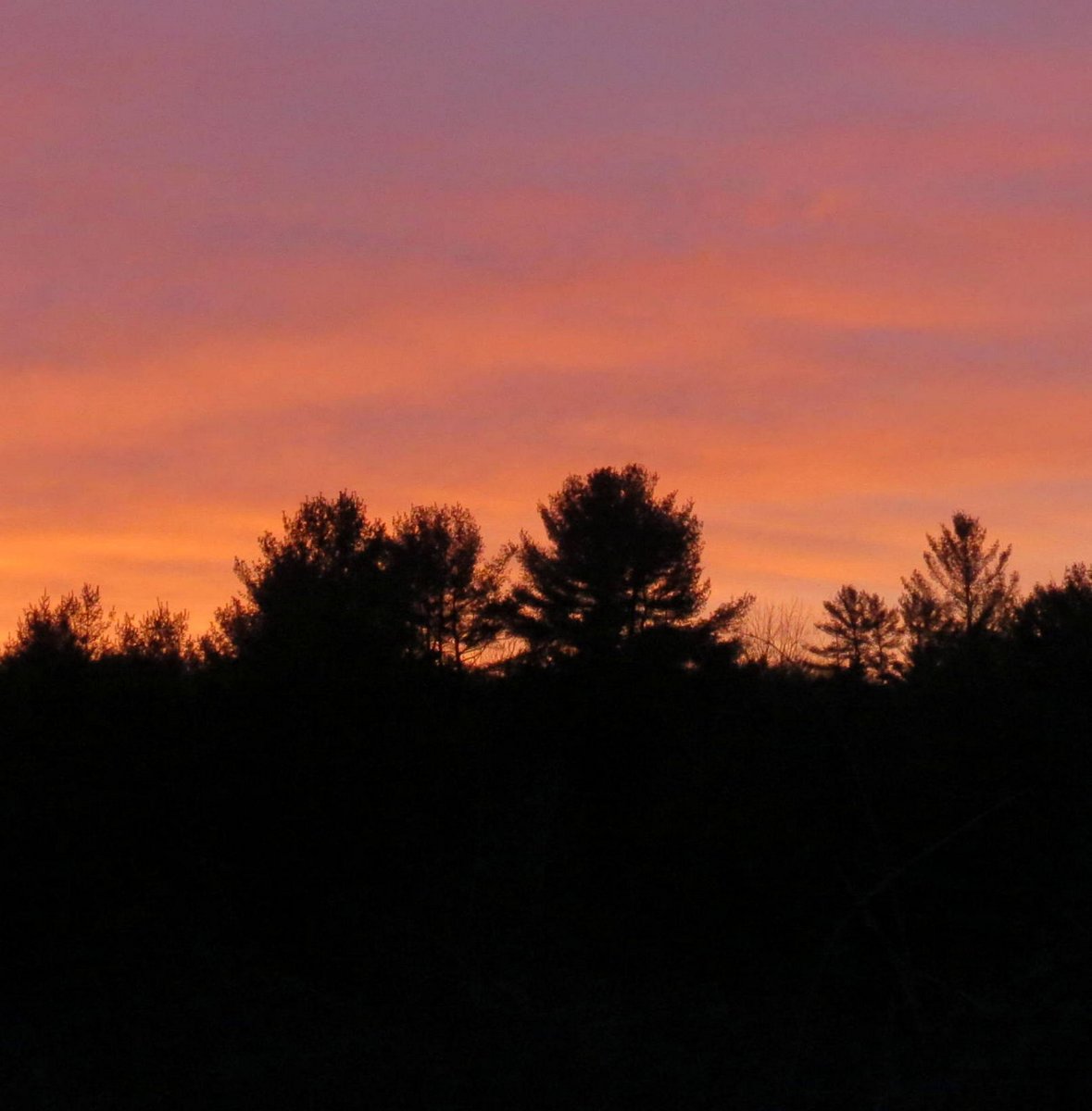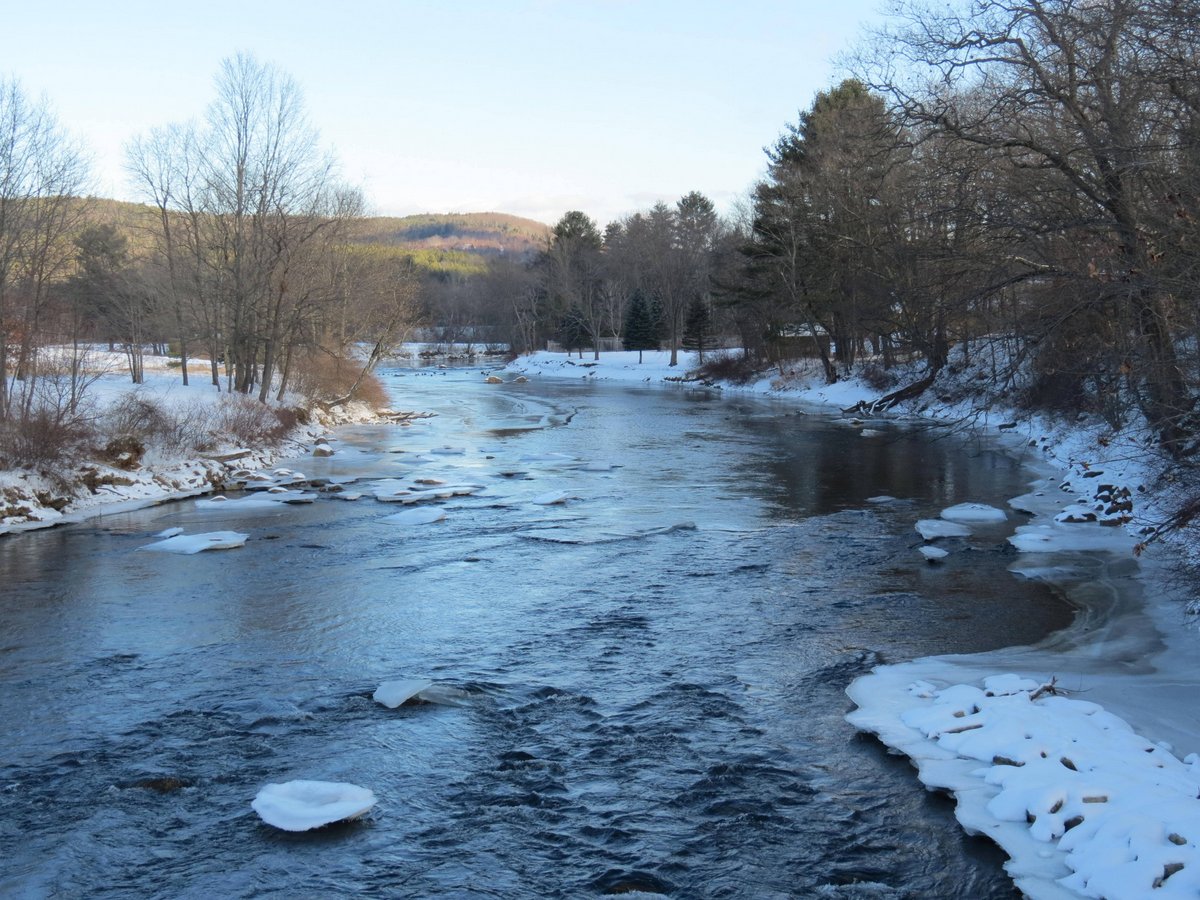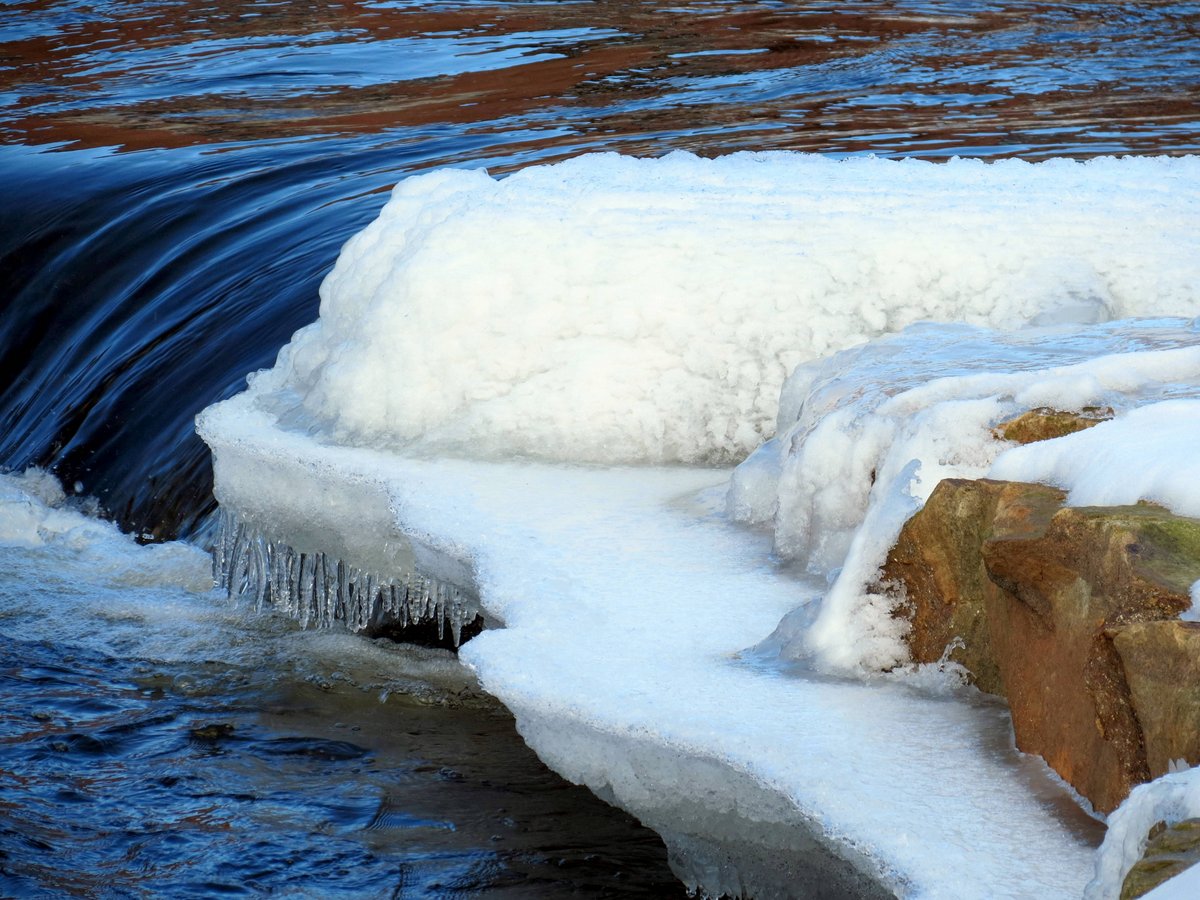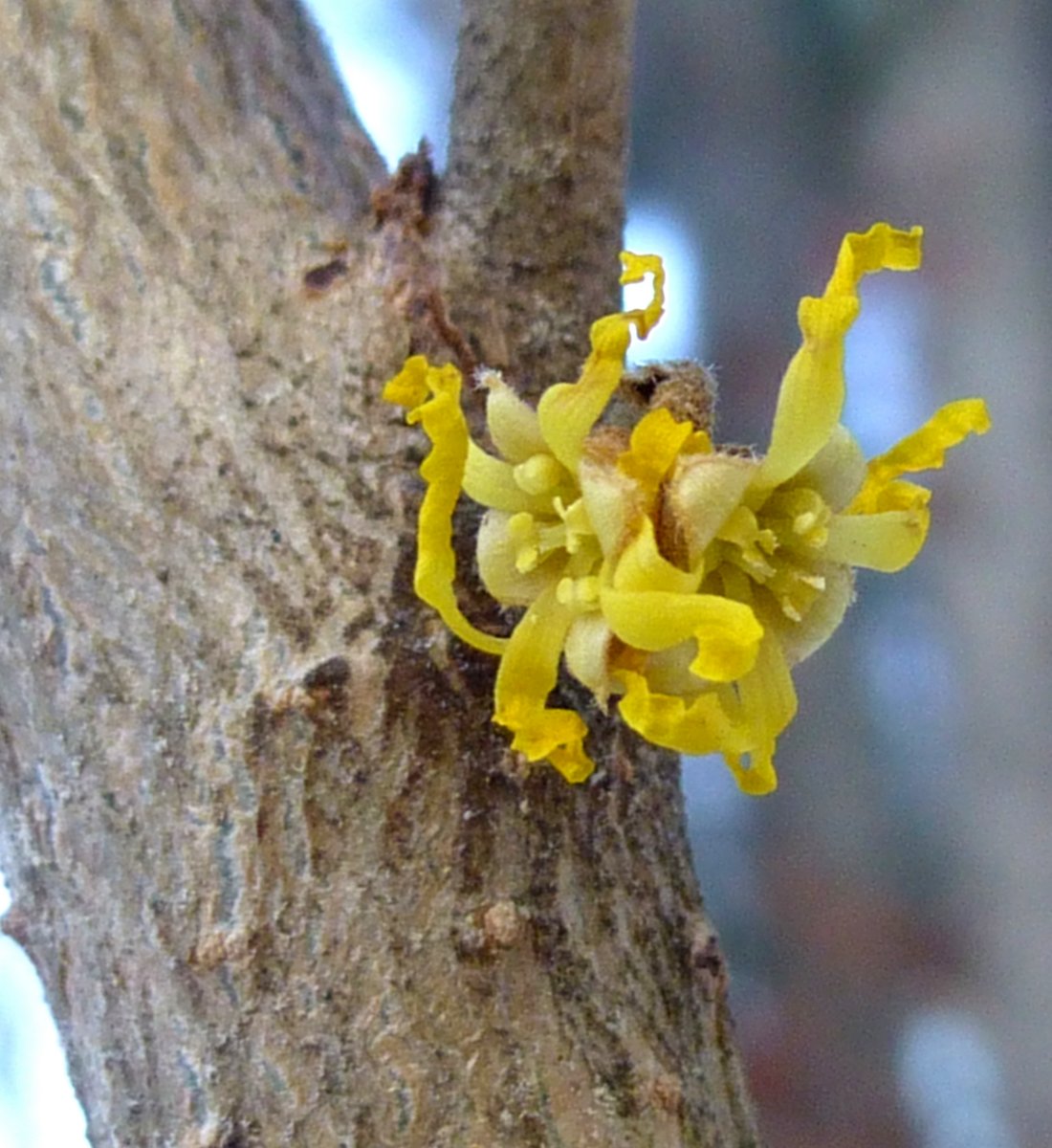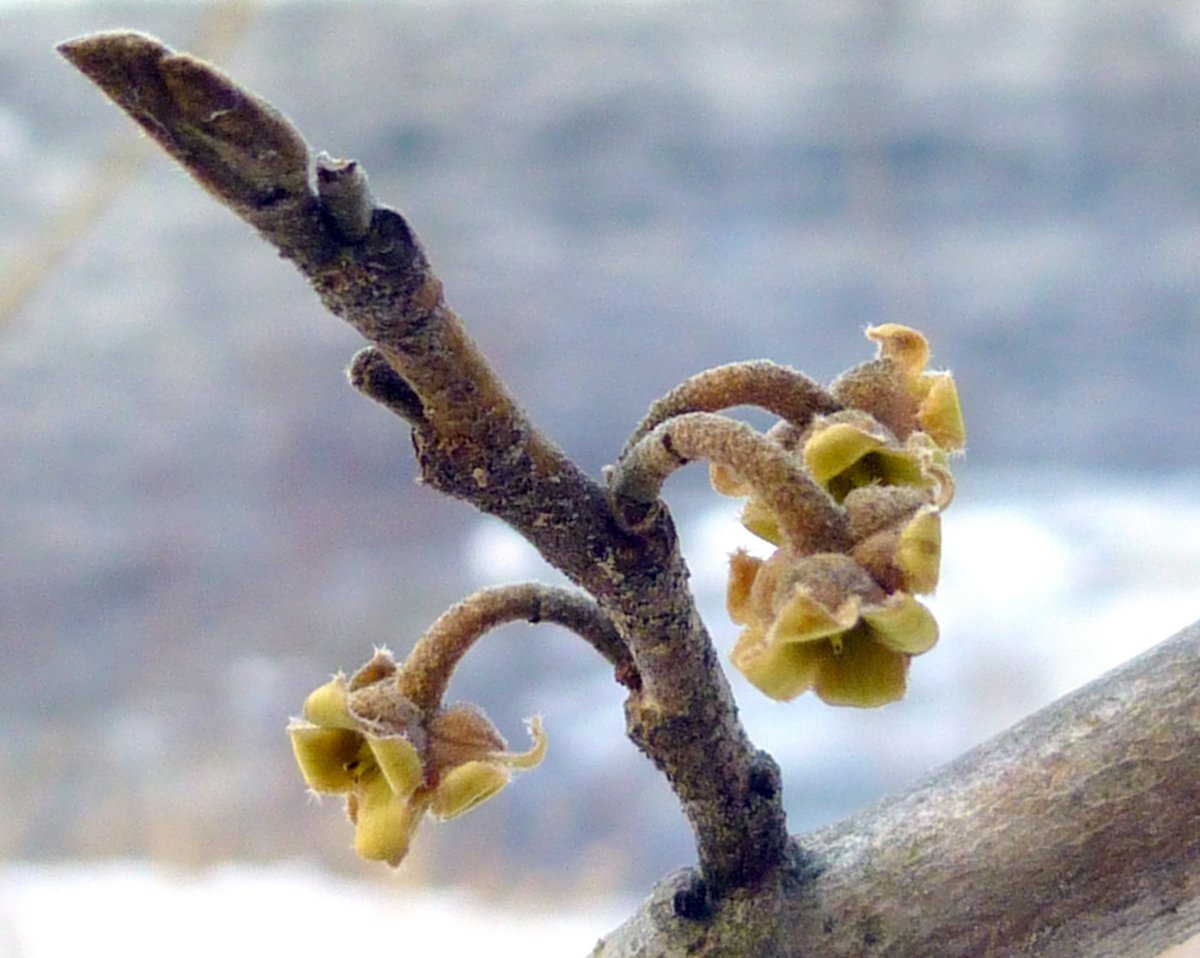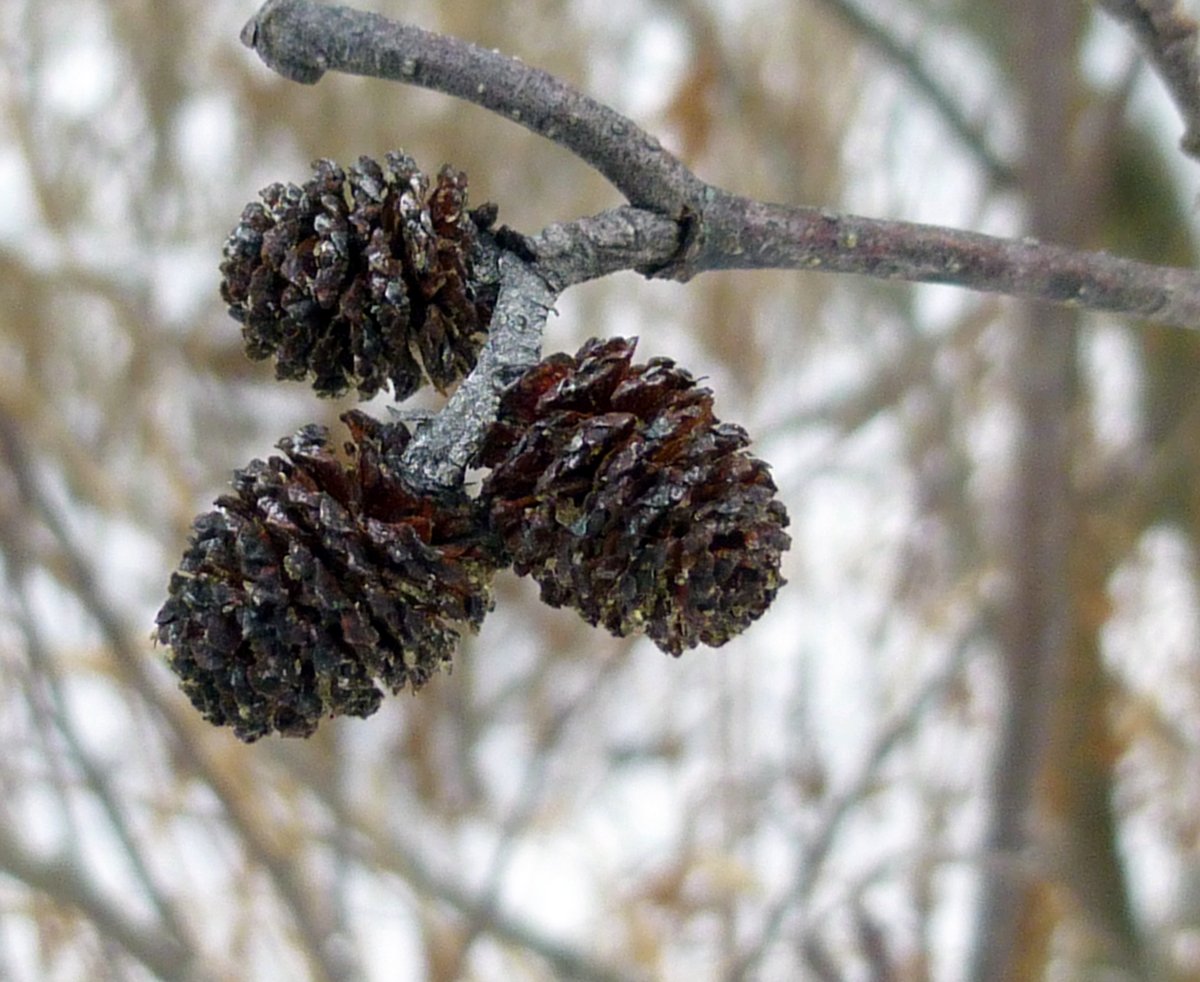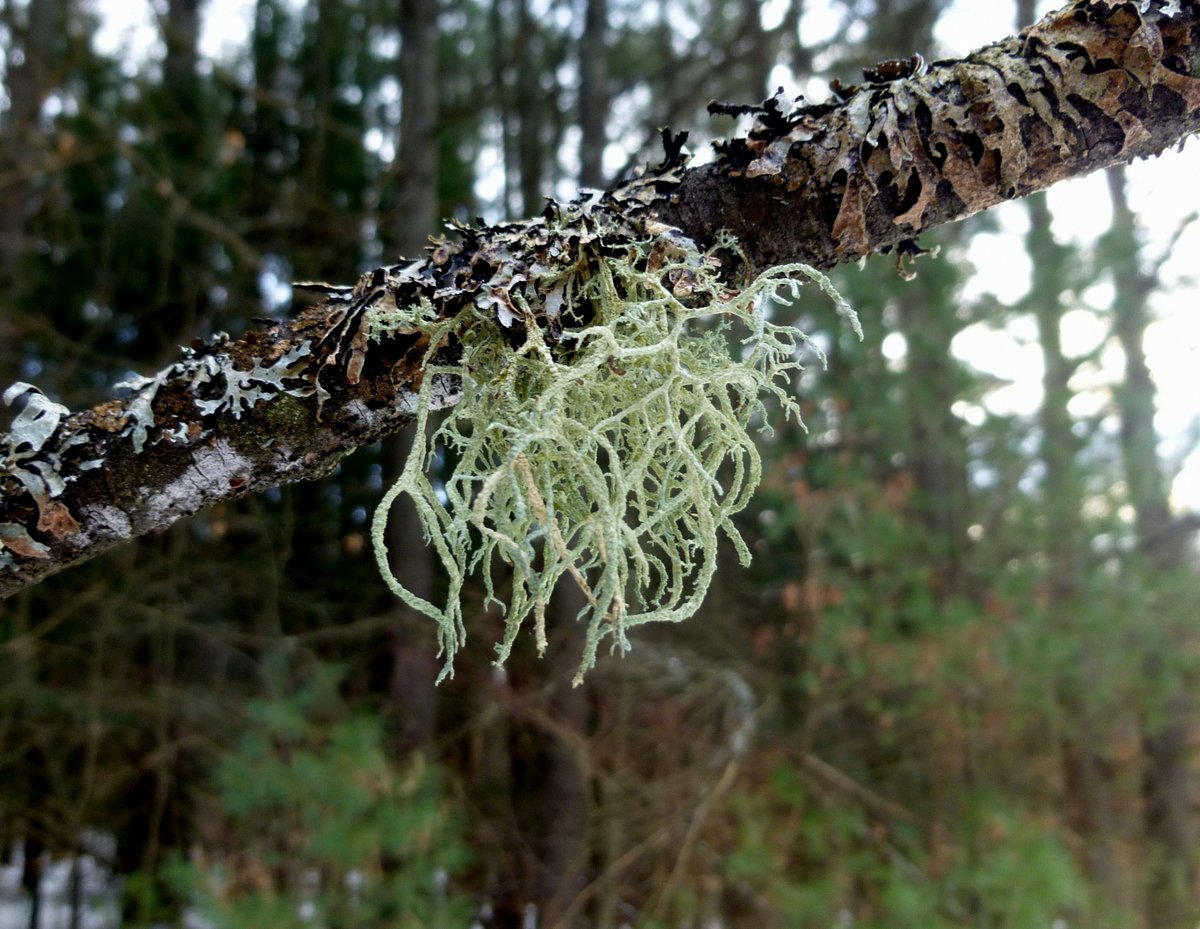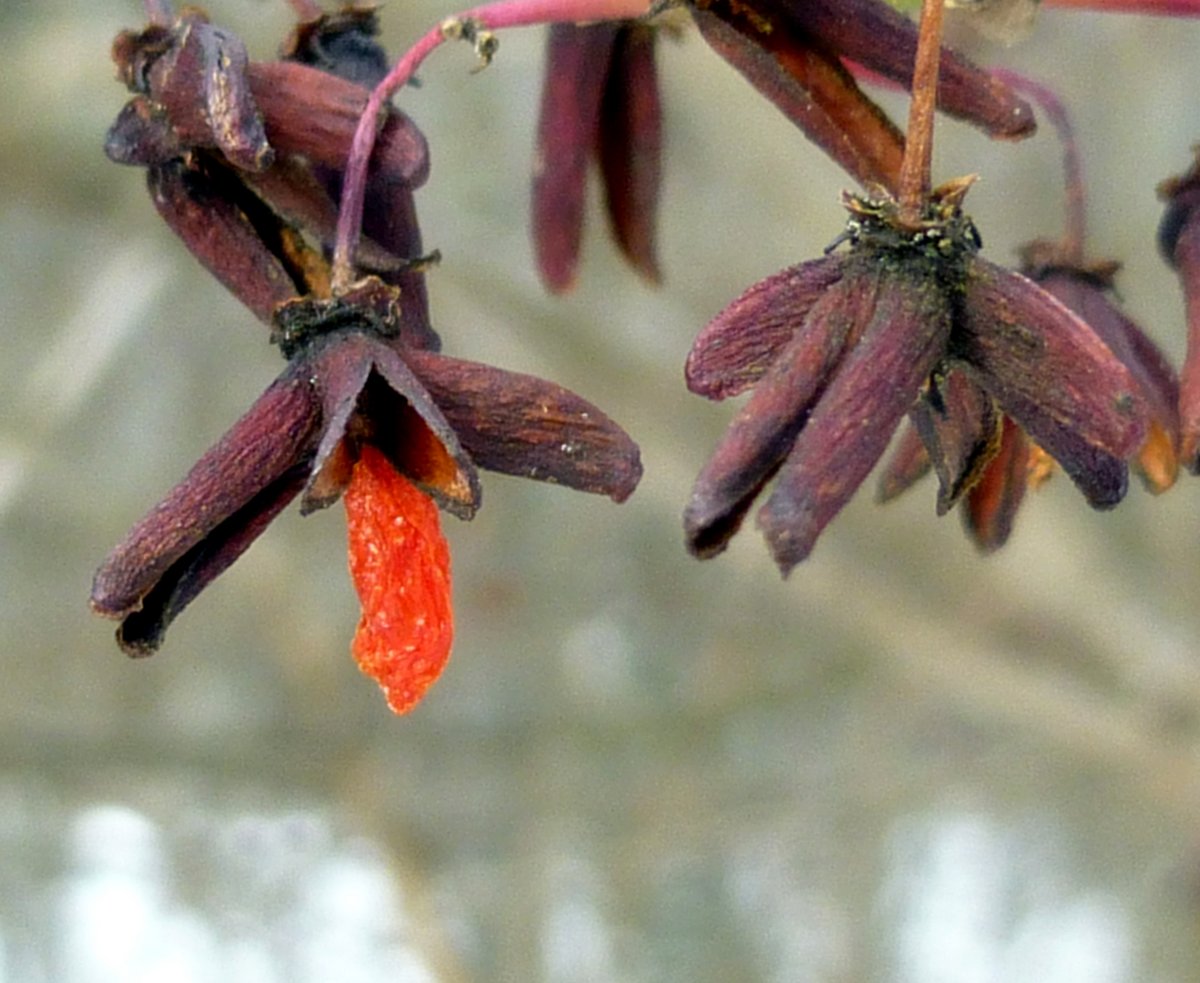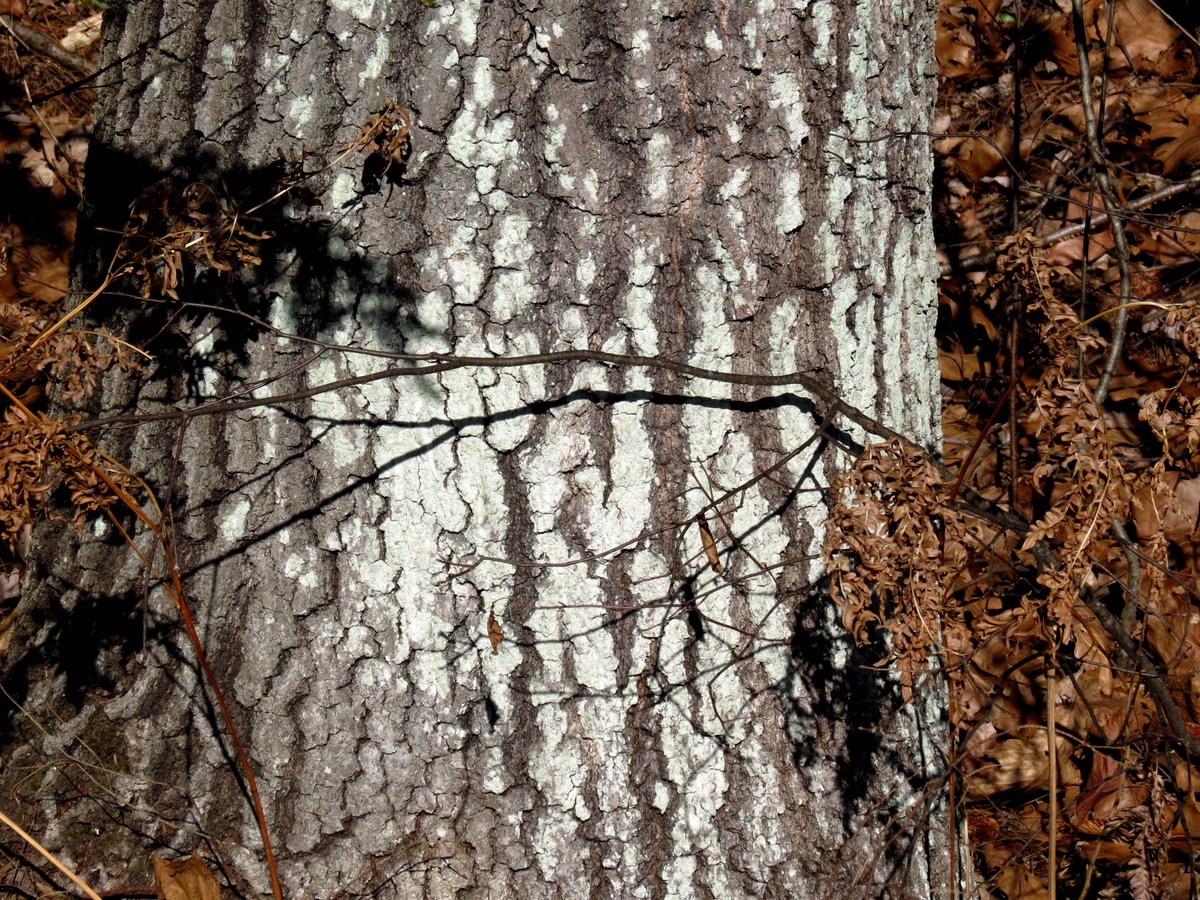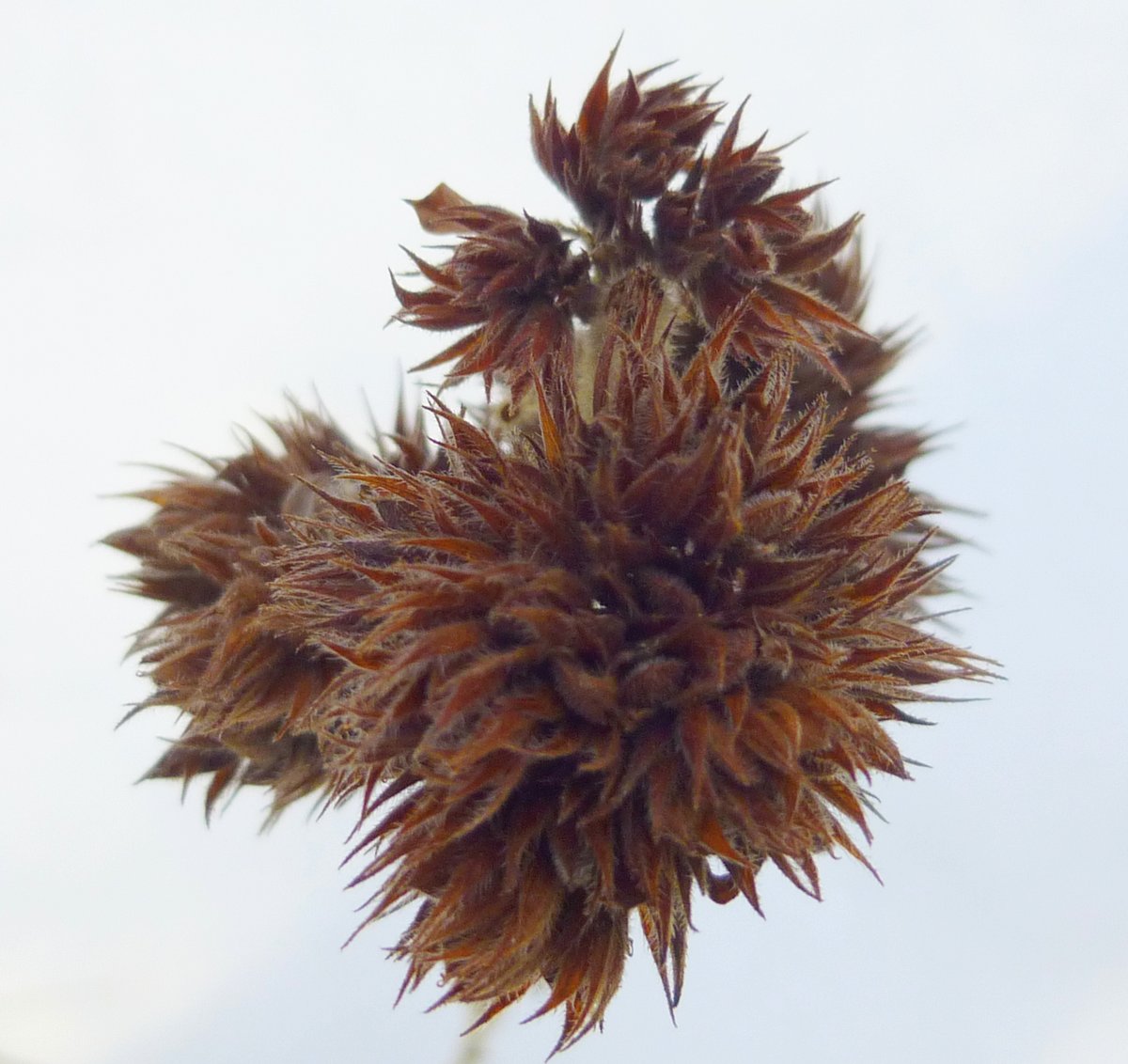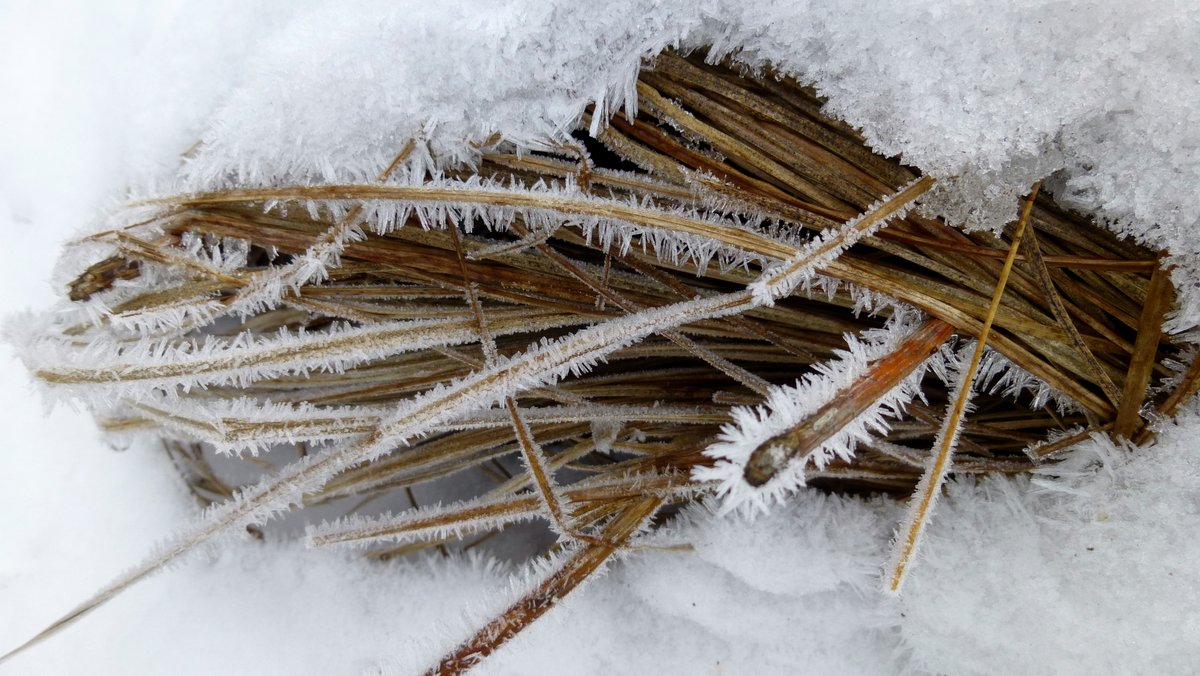
To open this post I should let newer readers know that I’m not a lichen expert. Though I do make mistakes I try hard to be accurate when identifying them. I started doing lichen posts because I enjoyed seeing them and I thought you would, too. They’re easy to find because they grow virtually everywhere, and it’s nice to see their bright colors and unusual shapes in winter. Common goldspeck lichen (Candelariella vitellina) for instance, is a beautiful bright yellow, cheery lichen that grows on stone.

Many lichens produce spores as a means of reproduction and that’s what this one was doing when I saw it. The little round bits that sometimes look like the suckers on an octopus are called apothecia, and that’s where the action is. Many lichens, for reasons I don’t know, like to produce spores in winter, so this is a good time to look for them. This lichen in my experience doesn’t often have them, so I got lucky.

Peppered rock shield lichen (Xanthoparmelia conspersa) also likes to grow on stone in full sun and I find a lot of them on old stone walls. They’re a good introduction to lichen study because their brown apothecia are large and easy to see without aid. Lichens are made up of a symbiotic relationship between fungi and algae or cyanobacteria. Technically their apothecia are “fungal reproductive structures, in which the fungus reproduces itself through the production of spores.”

My original thoughts for this post included finding lichens I hadn’t seen before, but then I thought no, I don’t want readers to have to find specific tree species or to have to climb a mountain to see these lichens so I stayed with more easily found lichens, like these pebbled pixie cups (Cladonia pyxidata) I saw growing right beside the road I was walking on. They like to grow on soil or rotting stumps and logs and though very small they grow in groups, so that makes them easier to see.

Though pixie cup lichens are squamulose they have fruticose fruiting structures called podetia. The parts that look like tiny golf tees are its podetia. “Podetia” describes a stalk like growth which bears the apothecia, or fruiting bodies. Some examples might have some almost microscopic reddish dots around the rim of the tiny cup, which are its apothecia. Finally, frucitose means a lichen has a bushy, vertical growth. Since this example has squamules even growing inside the tiny cups it must be a pebbled pixie cup lichen.
You might notice that some of these photos aren’t as sharp as they could be and that’s because I think I’ve worn out another camera. My little Olympus Stylus TG-870 has just about given up the ghost I think, so I’ve had to order a new camera. I hope you’ll bear with me while this issue irons itself out. I think this must be the fourth or fifth camera I’ve gone through in the nearly eleven years of doing this blog, but they have a rough time of it in the woods.

I reminded myself, by taking this photo of a candle flame lichen (Candelaria concolor,) that it is not a great idea to shoot the color yellow in full sun. But you can see the details, and that’s what matters. You should look for this lichen on the trees next time you go to a shopping center, because it is found on the bark of deciduous trees in open areas. From what I’ve seen it doesn’t mind car exhaust, which is unusual because most lichens are sensitive to poor air quality. Look for the bright color rather than size first. The example seen here was growing on an ash tree and was smaller than a penny.

I find what I believe are rosy saucer lichens (Ochrolechia trochophore) growing on smooth barked trees like maples, and I see them everywhere I go, winter and summer. In fact it’s safe to say that I probably see more of this pretty little lichen than any other. Its apothecia are not subject to cold or dryness, apparently, because they never seem to change. This particular lichen must produce huge amounts of spores.

Script lichens are a good example of how lichens can change according to the season. When I see them in summer, they look like barely noticeable gray spots on trees but in winter their apothecia start to show. The blackish lines are its apothecia, and long apothecia that look like a pair of lips are called lirellae. The grayish part is the body or thallus. This one is very common and easy to find in this area and I believe it is the common script lichen (Graphis scripta.)

Golden moonglow lichens (Dimelaena oreina) fooled me this year. I always thought they would only grow on smooth surfaces like stone benches or gravestones but this year I found them on some very rough stone. This is a pretty lichen that I’ve read can get quite large but I’ve never seen one more than an inch or two across. They don’t seem to change color when they dry out like many other lichens do. This one was producing spores and that’s something I don’t see this lichen do very often.

Scattered rock posy lichens (Rhizoplaca subdiscrepans) like to grow on old stone walls in full sun, but I’ve also found them on mountain tops. Years ago I found a beautiful example on a gravestone and never found another anywhere else. Now I see them everywhere I go so it shows me that I have to train my eyes to see the very small.

And this example was very small indeed. The orange pad like structures are its apothecia and the roundish gray bits are its body, which in this case are called squamules. What you see here would have easily fit on a penny with plenty of room to spare. Next time you’re near a stone wall take a close look. You might be surprised by what you see.

Sidewalk firedot lichen (Caloplaca feracissima) is a pretty, bright colored lichen that gets its common name from the way it grows on concrete sidewalks. It is a lime lover and concrete sidewalks have lime in them, so when you find it in a stone wall it’s a fair bet that the stone it grows on has limestone in it too. This stone, my favorite “go to” stone to see this lichen, is almost completely covered by it. What is a bit odd about it is how this is the only stone in this wall like it.

A closer look at the sidewalk firedot lichen showed how it is another lichen made up of tiny specks, some of which are its dry apothecia. They are very small so you really need a loupe or a macro lens to see them clearly.

Another of my favorite lichens is the star rosette (Physcia stellaris) because when you look at it you often find that it appears to be looking back, with its big, dark apothecia. But they aren’t always dark; sometimes they’re gray and sometimes they appear more blue than gray. That’s because though they are actually dark brown, they have a powdery wax coating that can cause their color to change depending on the light. Plant parts with this powdery waxy coating are said to be pruinose and a good example of it is the “bloom” on blueberries, grapes, plums, and other fruit. On this day this example’s apothecia didn’t appear to have any pruinose coating at all.

Here was an example that illustrates how a lichen can change due to weather or even over time. That’s why it’s best, when you find some that interest you, to look at them every now and then in different weather conditions to see how they change. Some might not change at all but many do.

The tufted ramalina lichen (Ramalina americana) has a green body (thallus) with flattened strap like branches and white fruiting bodies (apothecia.) They are very susceptible to air pollution and many have died off but oddly, I find them growing in a parking lot surrounded by cars. I’m not sure what that means but generally lichens are a good indicator of air quality. If you see a lot of them in your area that most likely means that your air quality is good.

If you see a tree that looks as if someone threw a bucket of white paint at it you could be seeing a whitewash lichen (Phlyctis argena.) On the other hand, you could be seeing a white fungus called the white stain fungus (Julella fallaciosa.) That’s where looking closely comes in; if you see what look like small black dots or rings in the white field, it is most likely the fungus. Neither the fungus or the lichen will hurt the tree. Just think of them as birds that have found a good place to perch, because that’s all they’re doing.

This tree had me baffled. I thought it was covered with some kind of lichen but I had never seen one this color envelops an entire tree before, so I had to send the photos to my friend who wrote a book on lichens. Not surprisingly he knew right off what it was.

A photo of the tiny, almost invisible apothecia helped with his identification.

You could have knocked me over with a feather when he said that it was my old friend the maple dust lichen (Lecanora thysanophora,) because every one I had seen previously looked like the one in this photo. He said that the individual thalli (the bodies) of these lichens can grow together to cover large swaths of a smooth tree trunk. This is especially true on young maple trees with very smooth bark, which of course is what this young tree was. Lichens always find a way to amaze me, no matter how many of them I see.

This lichen was going to appear here as a mystery lichen but at the last moment I sent photos to my lichen identifying friend and he came back with Ropalospora viridis which has no common name. Since that was the one I had chosen out of his book I was happy to have the confirmation. Lichens can be tough to identify but as I’ve said here so many times before, you don’t have to know its name or even that it is a lichen to appreciate its beauty. That is the most important part; just being aware of and enjoying the beauty that is all around you.

This lichen doesn’t have apothecia. Instead it has bright, lime green soredia, which are tiny balls of cells that break off and start new lichens. Many lichens have asexual means of reproduction and this is one of those. It’s a pretty little thing that I’m sure will be hard to miss now that I’ve seen it.
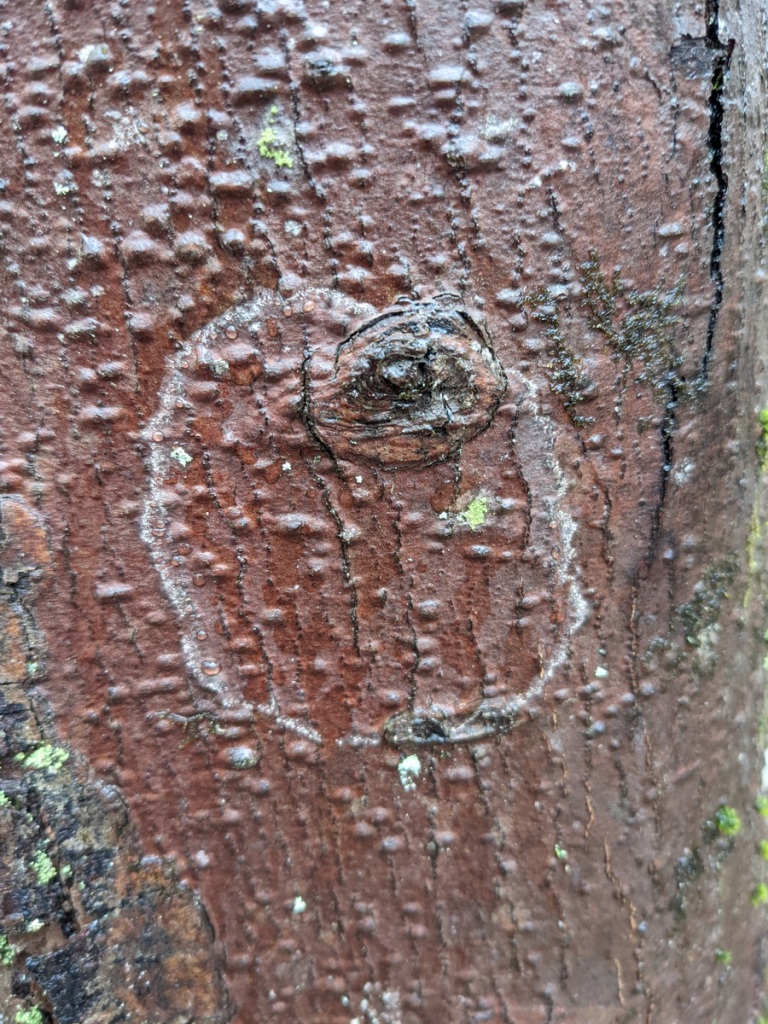
There is always at least one unknown in my lichen folder and this is today’s example. At first I thought the ghostly white circle on a tree was the fringe of a maple dust lichen, but where was the rest of the lichen? Then I thought it might be slime flux, which is a weeping wound on a tree also called bacterial wet wood. It looks like a wet stain running down the bark and can be white, black, orange, brown and other colors. I’ve been aware of it and have seen it on various trees throughout my life but I’ve never seen what it looks like when it just starts, and I wondered if that was what I was seeing here. In any event both I and my lichenologist friend are baffled by this one, so if you happen to know what it is, we’d really love to hear about it.
I hope you’ll look at and enjoy the lichens in your area. You won’t have to look hard because they are literally everywhere.
For anyone interested here is the ordering information for the lichen book I’ve been speaking of throughout this post. I’m sorry that I couldn’t get it to you in the original post.
From the tiniest grain of sand to the large sun in the sky, all are here to teach us. ~Pam Torres
Thanks for stopping in.















